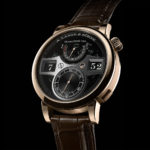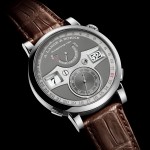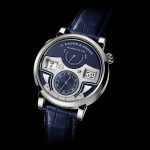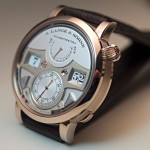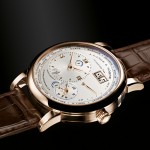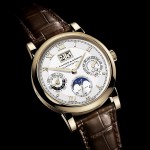Collector’s Guide: A. Lange & Söhne Zeitwerk
Every single reference since 2009.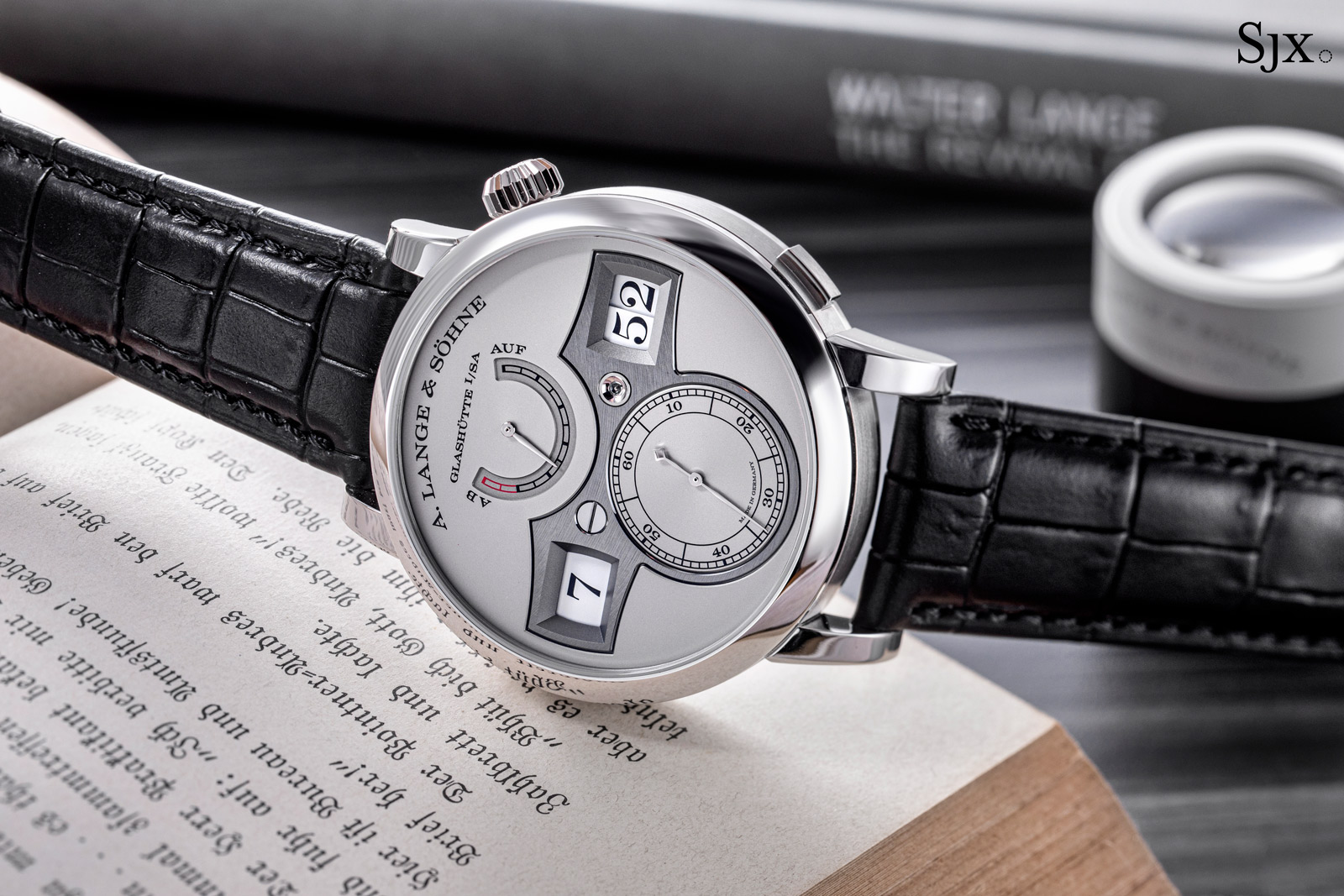
Undoubtedly the most unusual wristwatch from A. Lange & Söhne – and perhaps the brand’s most intriguing – the Zeitwerk is digital but entirely mechanical. Thirteen years after the first model made its debut and became a landmark in modern watchmaking, Lange has just unveiled the all-new, second-generation Zeitwerk.
Gently redesigned but substantially improved, the second-generation model brings the total number of Zeitwerk models to ten (totalling 17 references) from 2009 to now. What follows is a look at every single Zeitwerk reference, including rarely-seen limited editions and a little-known unique piece (save for the unique example never publicly announced by Lange). It’s intended to be be a clear and concise guide covering every single model, one that details the varied functions, decoration, and changes across variants.
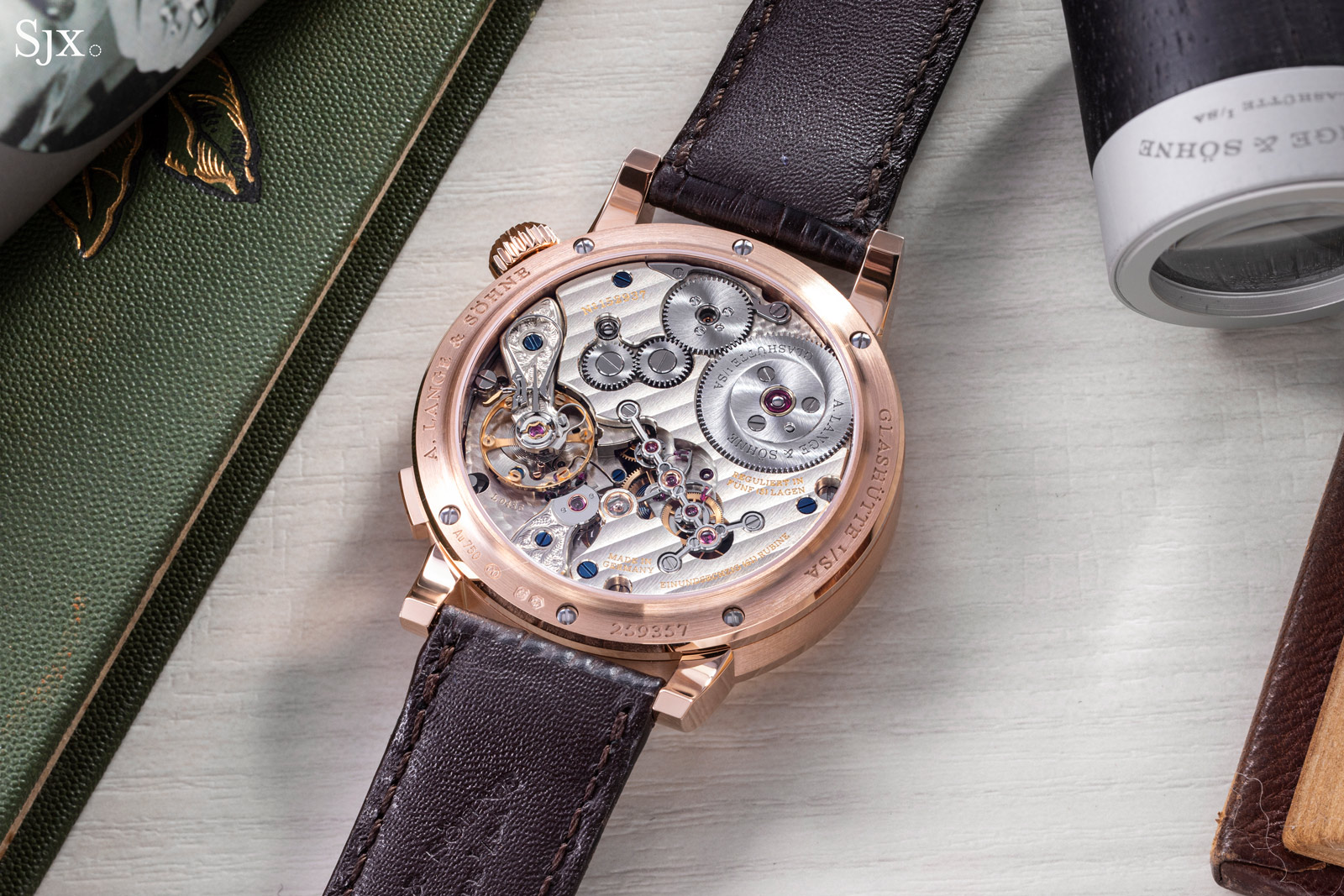
The latest-generation Zeitwerk movement, still recognisable thanks to the remontoir bridge
A brief history
Before we dive into the watches, it’s important to understand how the Zeitwerk came along and its significance in modern watchmaking.
Like much else created by Lange, the Zeitwerk has its roots in historical watchmaking in Saxony. The Zeitwerk’s digital display takes its cues from the five-minute clock sitting over the stage in the Dresden’s Semper Opera.
And like much else in historical Saxon watchmaking, the clock is related to A. Lange & Söhne. The clock maker behind the opera timekeeper, Johann Christian Friedrich Gutkaes, was the father-in-law of Ferdinand-Adolph Lange, the titular “A. Lange” who founded his firm in 1845.
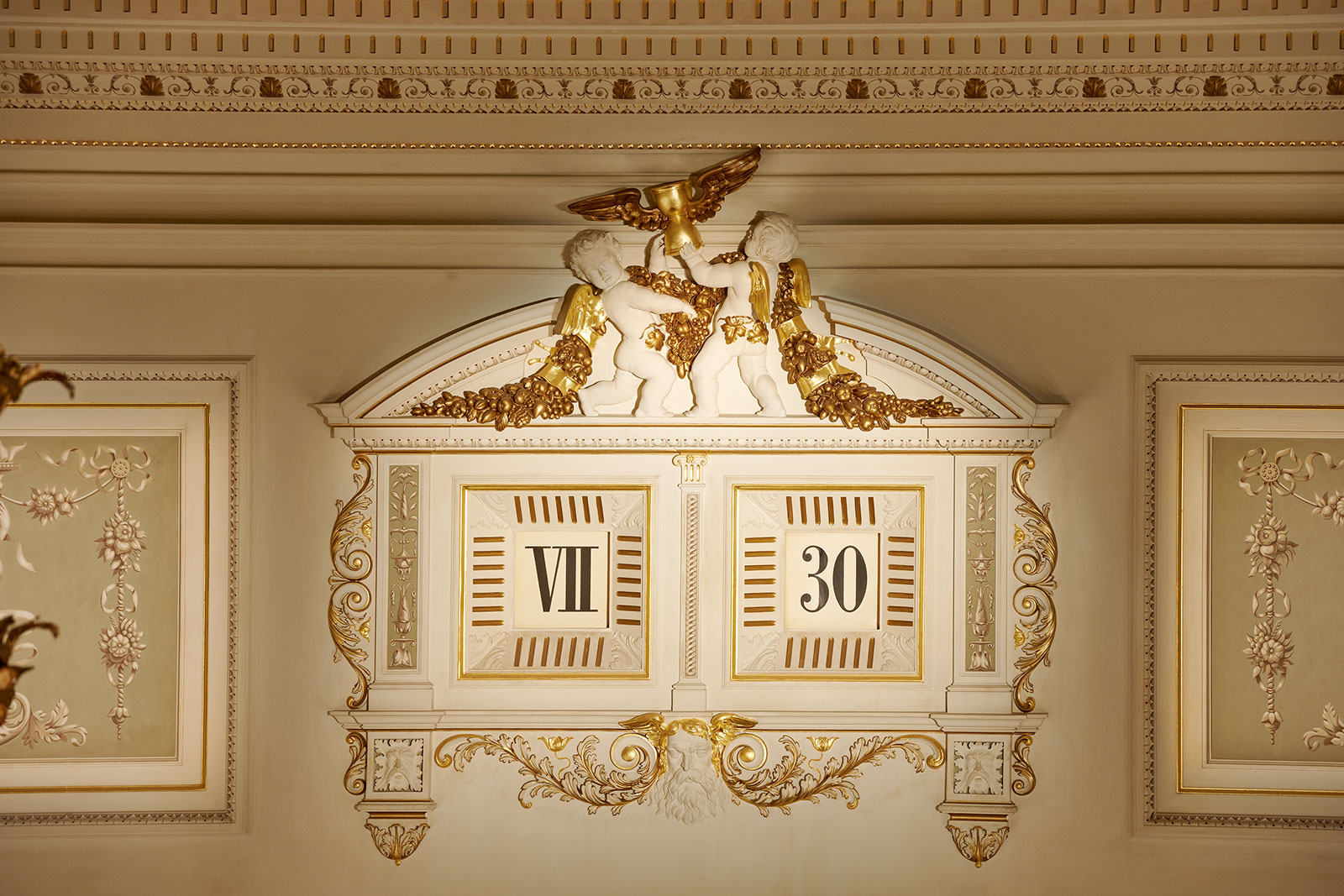
The five-minute clock in the Semper Opera. Image – Lange
The impetus for the digital wristwatch, however, came from Gunter Blümlein, the key man behind the revival of Lange in 1990. According to Anthony de Haas, now Lange’s Product Development Director, the late Blümlein sketched a digital Lange wristwatch in 2001, shortly before he passed away.
Development of the idea started in 2004 when Mr de Haas joined the company. Over the following five years, the design underwent multiple iterations – some far removed from the original concept – before culminating in the now-classic Zeitwerk dial. For the full story behind the genesis of the Zeitwerk, revisit our 2018 story.
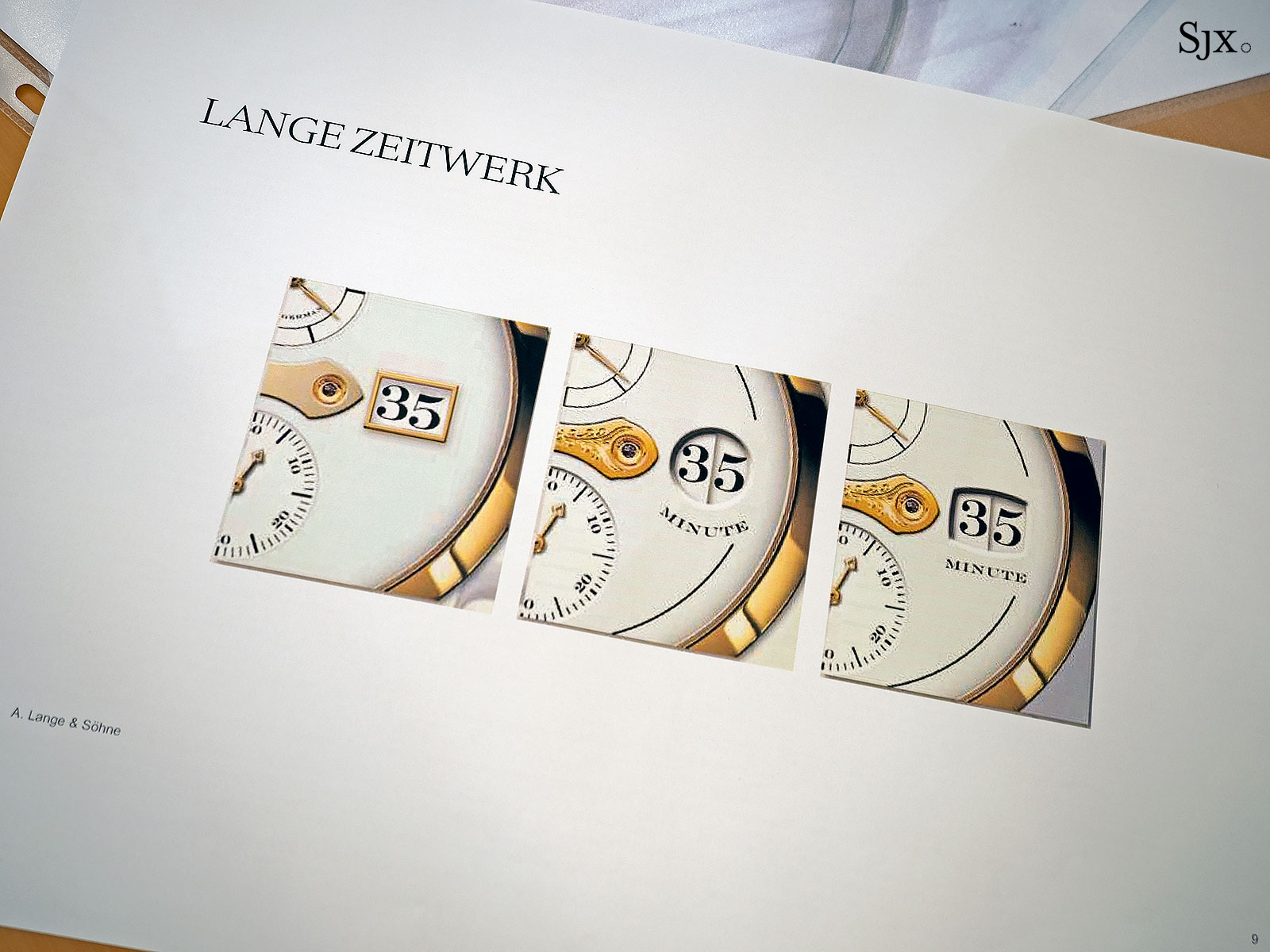
Early concepts for the Lange digital watch
Significance
Even now, two decades since Blümlein penned the concept, the Zeitwerk remains something of a unicorn, a feat considering digital displays are not a modern invention. In fact, they can be found in pocket watches from the 19th century. What sets the Zeitwerk apart?
The most obvious is the horizontal display of the digital hours and minutes – arranged from left to right like how time is read – whereas historical digital displays were laid out vertically as a matter of mechanical convenience.
Even in modern-day watchmaking, the Zeitwerk is one of the only three watches with horizontal hours and minutes – and likely the only one that functions reliably. The other two are the De Grisogono Meccanico dG from 2008 and the François Quentin 4N from 2010.
And when pitted against digital watches from F.P. Journe or Harry Winston’s Opus, the Zeitwerk is arguably more accomplished in technical terms, simply because it boasts superior robustness and reliability.
The comparison against the likes of F.P. Journe is also instructive because it reveals that Lange is an establishment brand with an independent spirit. It’s the only mainstream brand, one owned by luxury group by less, that has a watch as exotic as the Zeitwerk in the catalogue. Other comparable watches are the products of niche or independent watchmakers.
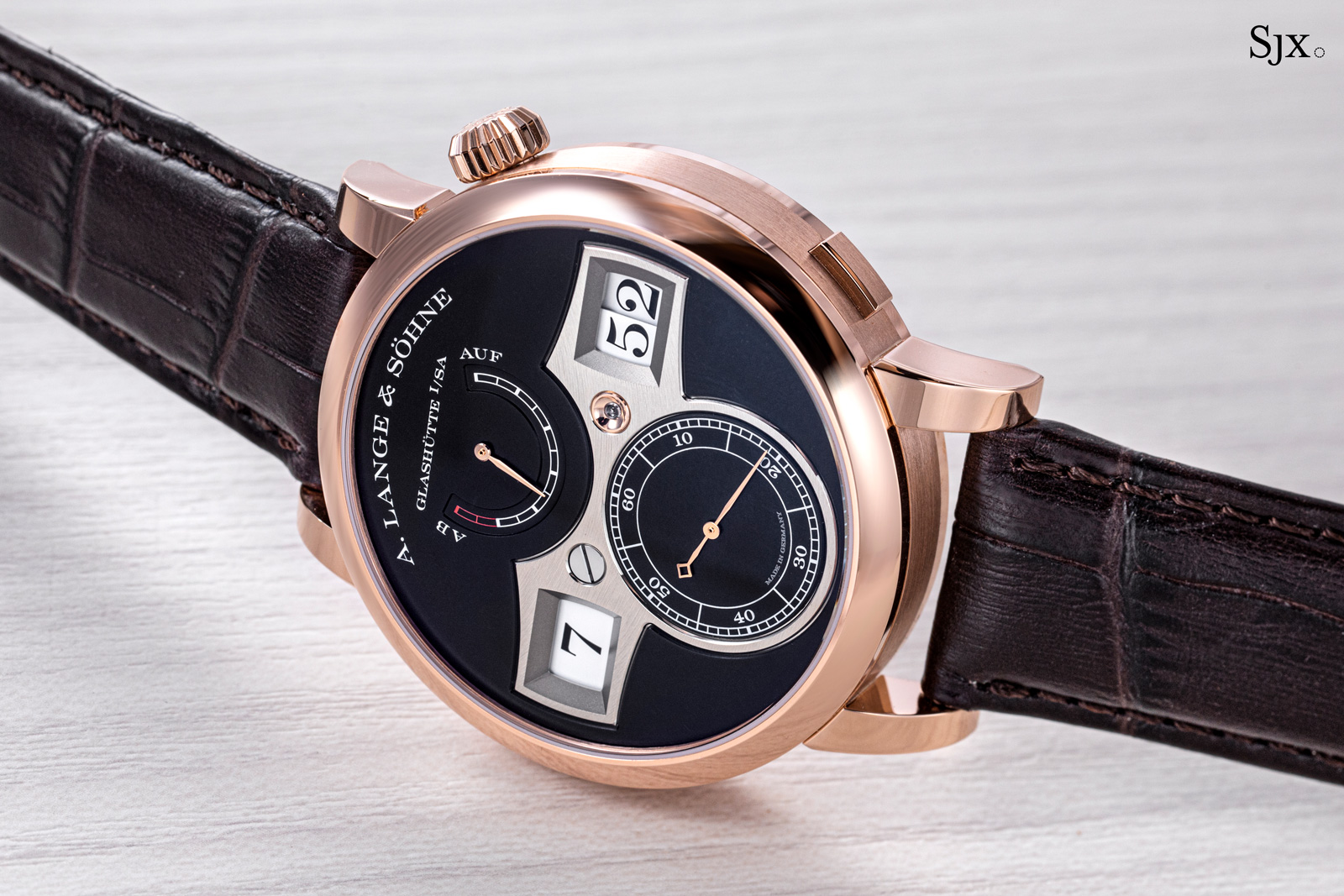
The second-generation Zeitwerk in pink gold
Technically-minded enthusiasts will realise the secret to the Zeitwerk’s digital display is the constant-force mechanism, also known as a remontoir, that drives the large and heavy discs. Centred on a tiny spring that stores and instantaneously releases energy every minute, the remontoir is what makes the Zeitwerk possible.
The reason for that is simply energy consumption. A conventional gear train has insufficient torque to drive the discs without affecting timekeeping, while a separate mainspring would be too much, both in terms of power and size.
That left the remontoir as the most elegant solution, and also one that already existed when the Zeitwerk was in development. The mechanism was borrowed from the Lange 31, which required a remontoir for the opposite purpose. While in a Zeitwerk the remontoir rations out the limited energy in the mainspring, in the Lange 31 the constant-force mechanism was needed to moderate the power of the monstrous mainspring with a 31-day power reserve.
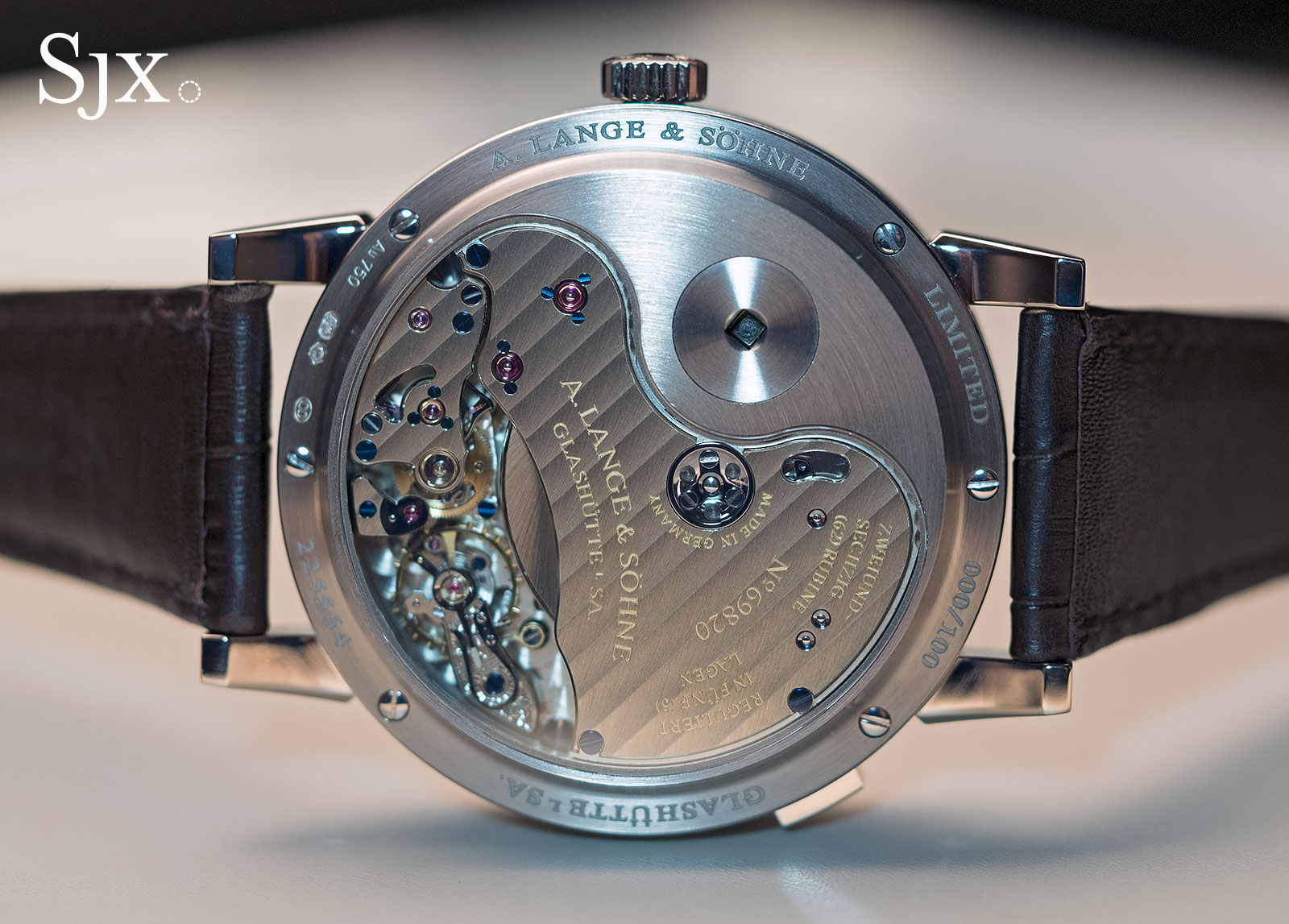
The Lange 31 with its enormous mainspring that is wound by a key that goes into the socket on the case back; and the remontoir is visible just next to the balance wheel
Overview
Launched in May 2009, the Zeitwerk collection totals to 17 references over 13 years, a small number considering its status as an iconic watch of the brand. Most of the references are due to the addition of striking complications. As a result there are essentially five variations based on function: time-only, date, hour striker, decimal striker, and minute repeater.
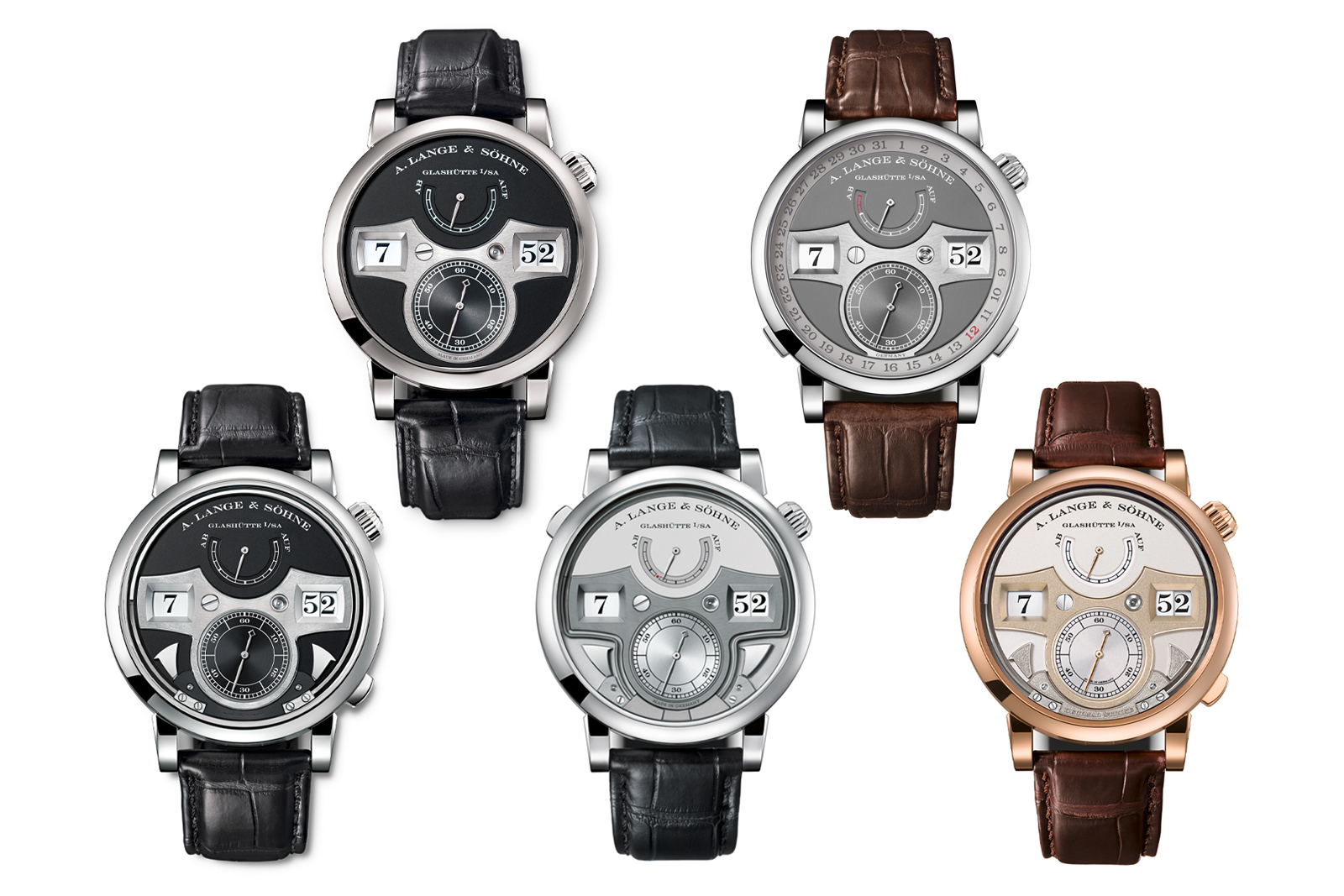
The five function groups of the Zeitwerk (clockwise from top-left): time only, date, decimal striker, minute repeater, hour striker
Despite the varied complications, the Zeitwerk collection is powered by only two distinct movement generations. Amongst the key differences between the two is power reserve, 36 hours for the first and 72 for the second.
In the current catalogue, the distinction is clear: all chiming Zeitwerk models are equipped with first-generation movement, while the non-chiming watches have been upgraded to sport the second-generation movement.
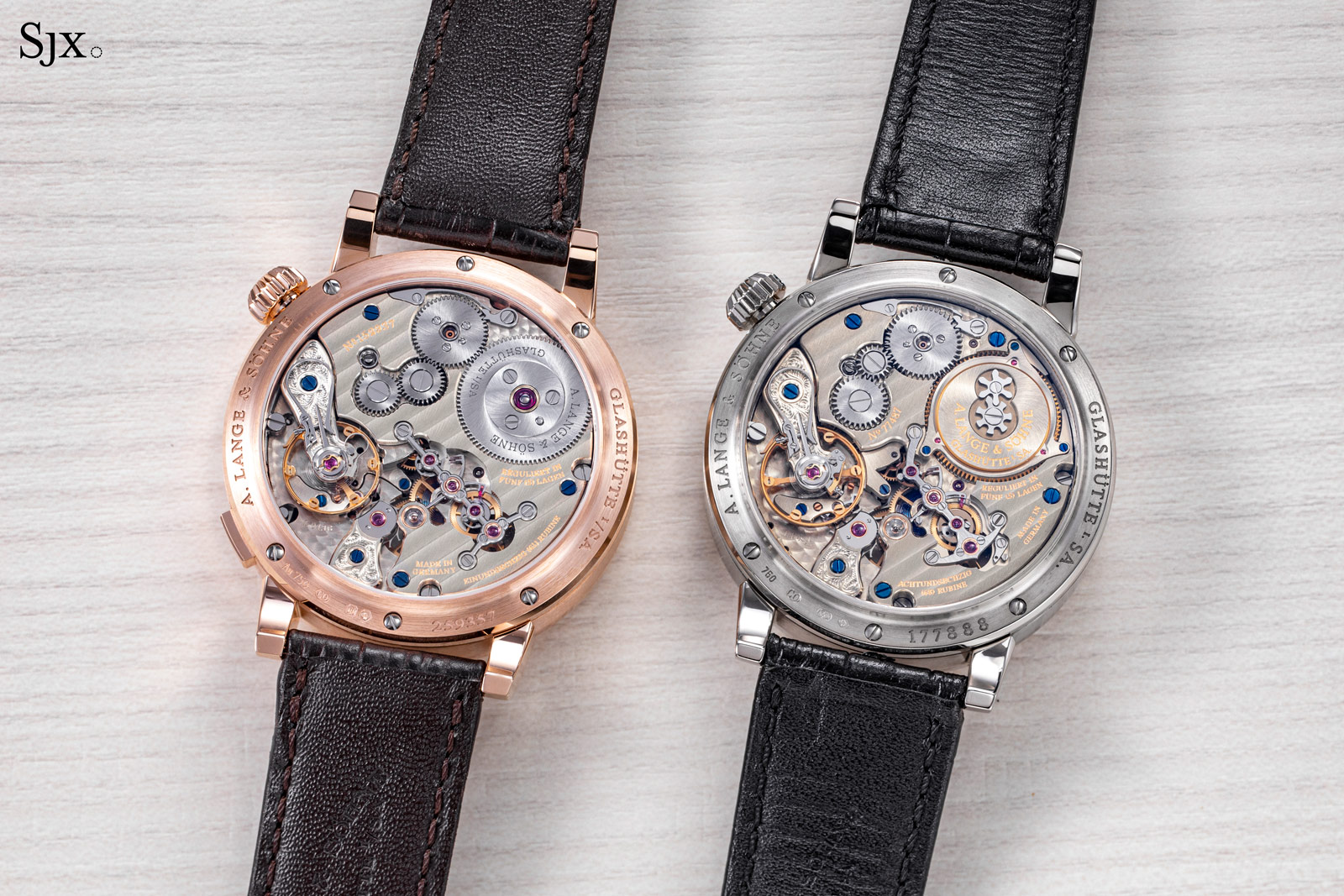
The second-generation movement (left) and first
The comparatively few variants of the Zeitwerk means it retains a strong, recognisable aesthetic that has varied little over the last decade. Indeed, there are only three dial types found on the Zeitwerk to date, namely conventional galvanic-coated silver, clear sapphire Luminous, and engraved Handwerkskunst.
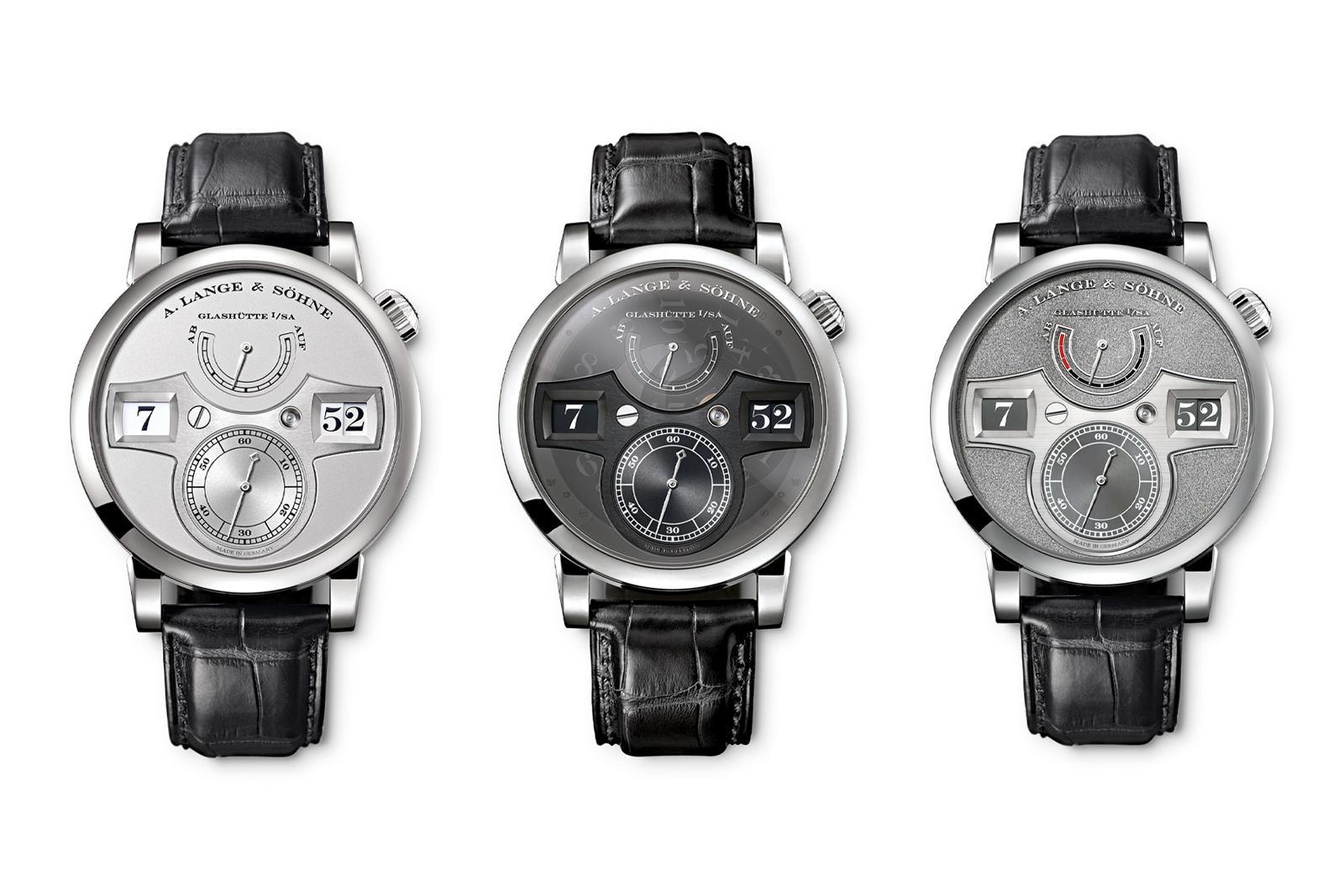
Dial types (from left): silver, clear sapphire, and hand engraved
And in terms of case material, the Zeitwerk sticks to the usual options offered by Lange, namely the three colours of gold, platinum, as well the brand’s proprietary Honey Gold. That, of course, covers only the publicly known Zeitwerk iterations.
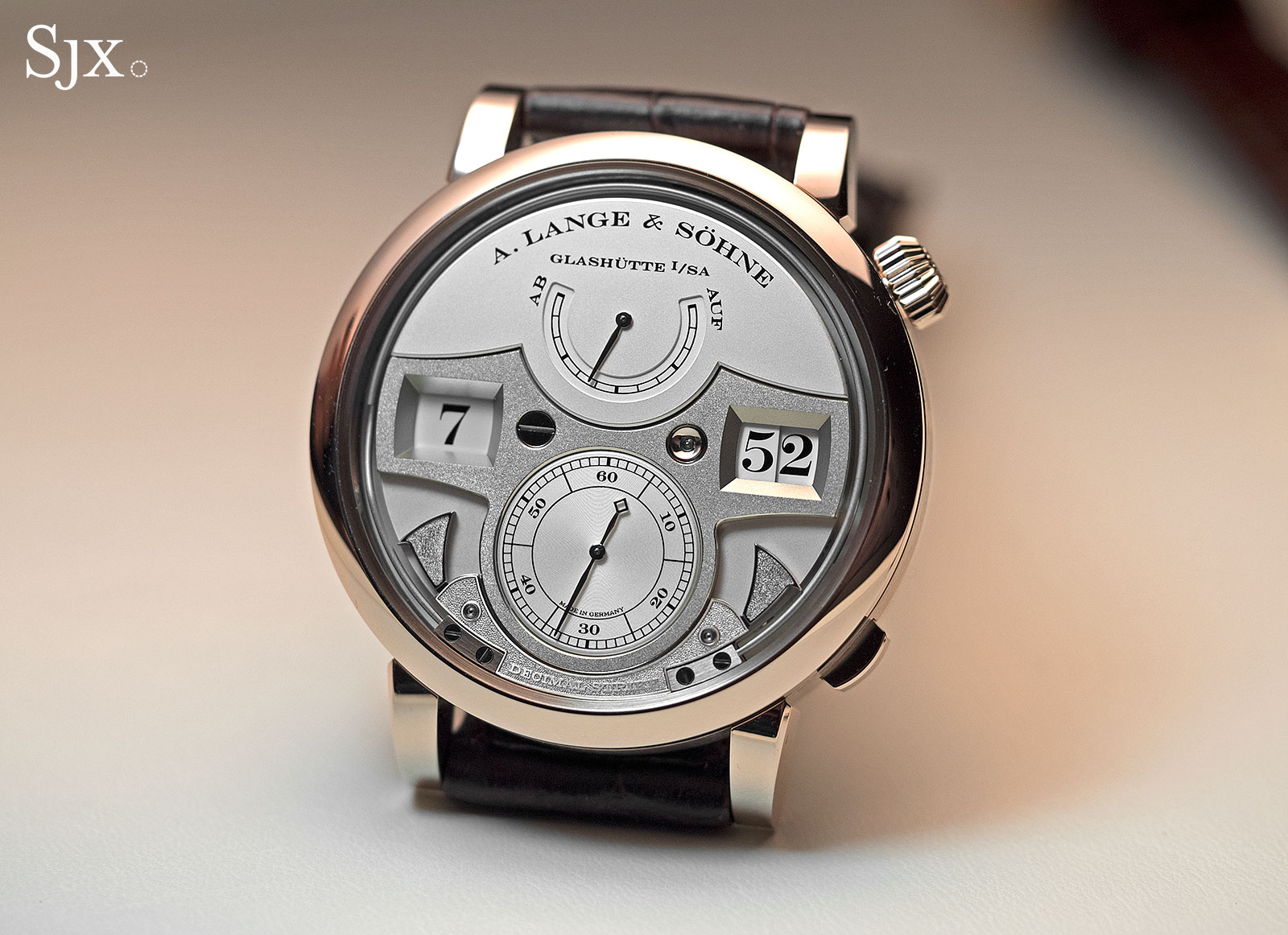
The Decimal Strike in Honey Gold
Unusually, the Zeitwerk line boasts a generous number of limited edition relative to the model variants. There have been seven limited edition Zeitwerks thus far, excluding the known unique piece, which add up to almost half the references ever produced.
Three of the limited editions have conventional silver dials, two are clear sapphire, and one is hand engraved. In terms of complications, four of the limited editions are time only, while the rest are chiming watches.
Notably, one of the limited editions, the Decimal Strike, was a one-off complication as its movement never made it into the regular catalogue.
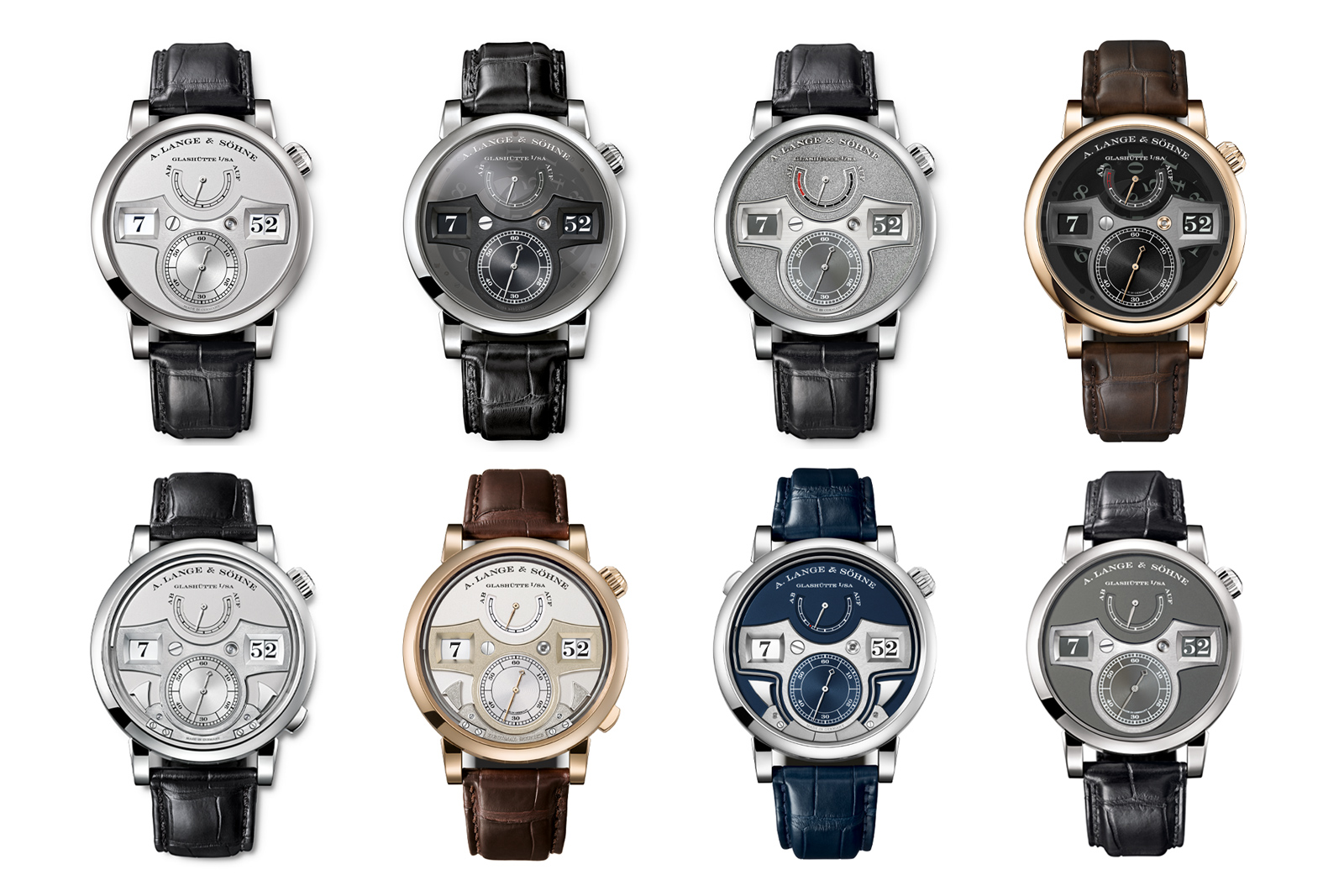
The seven limited editions and the unique piece (bottom right corner)
May 2009 – the original
The original Zeitwerk was unveiled in May 2009 in three colours of gold plus platinum. That same year, the Zeitwerk took home the L’Aiguille d’Or, the top prize at the GPHG.
The references were 140.029 (white gold), 140.021 (yellow gold), 140.032 (rose gold) and 140.025 (platinum). All four references contained the L043.1 with a patented, one-minute constant-force mechanism and power reserve of 36 hours.
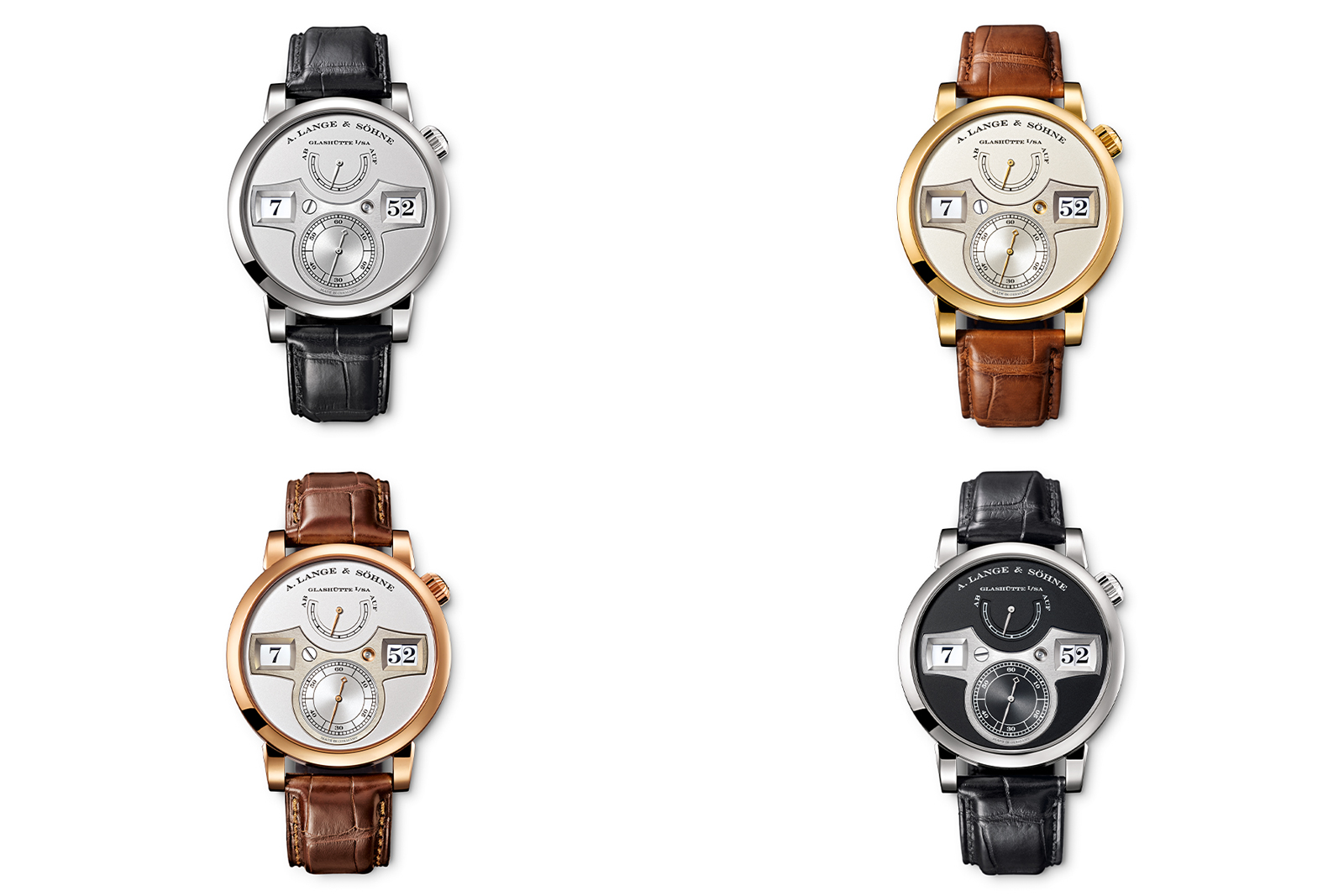
Clockwise from top left: platinum, yellow gold, white gold, and pink gold
The Zeitwerk case metal and dial combinations were similar to that of other Lange models, most notably the Lange 1. The yellow gold model was matched with a champagne dial, pink gold with silver, platinum with pale grey, while the white gold model had a black dial, the only one with a dark-coloured dial.
To match the case metal, the “wing” bridge for the time display was untreated German silver on the yellow gold and pink gold models, while on the white gold and platinum models the bridge was plated with rhodium to give it a silvery hue echoing the case.
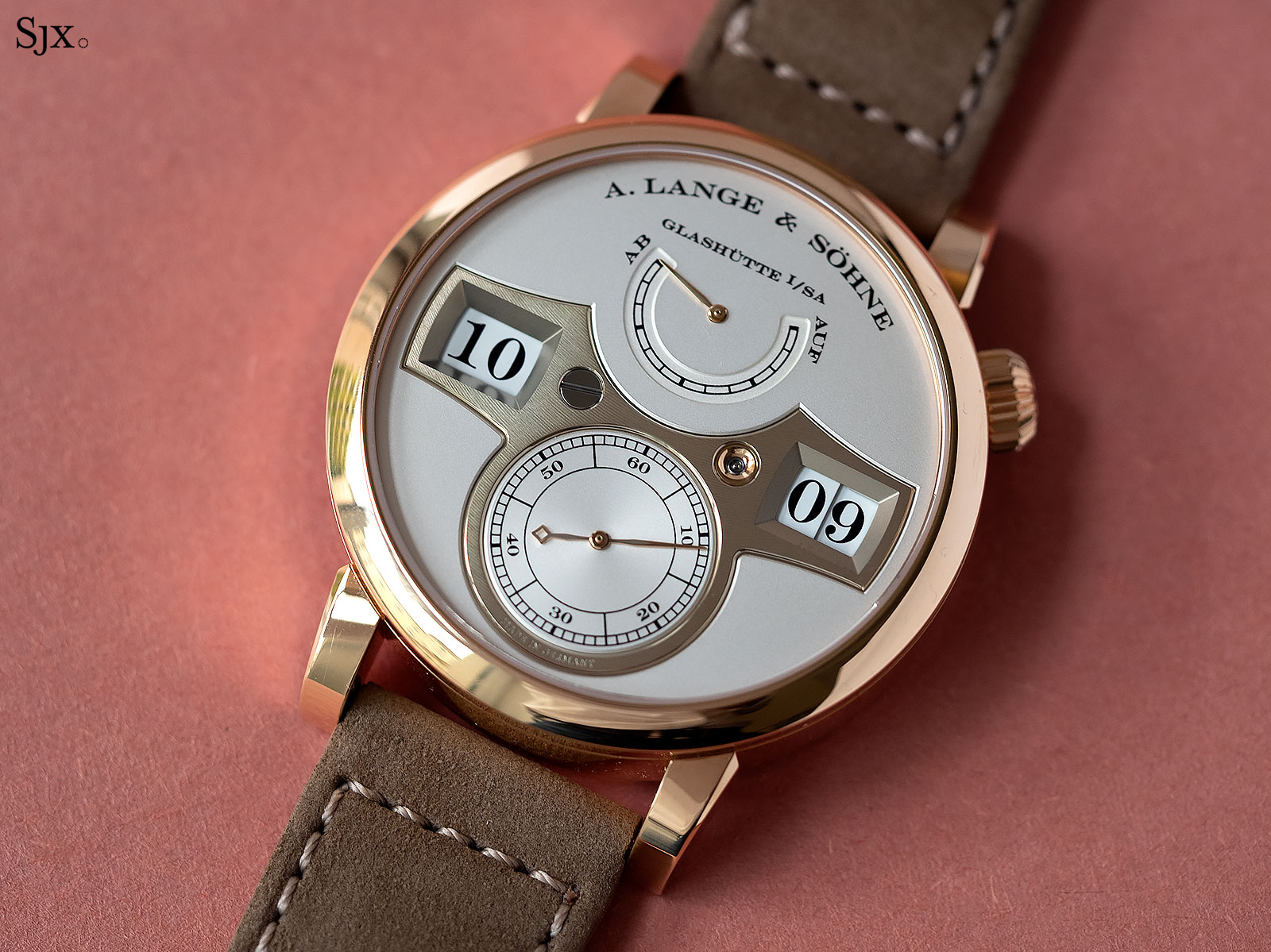
The OG Zeitwerk in pink gold
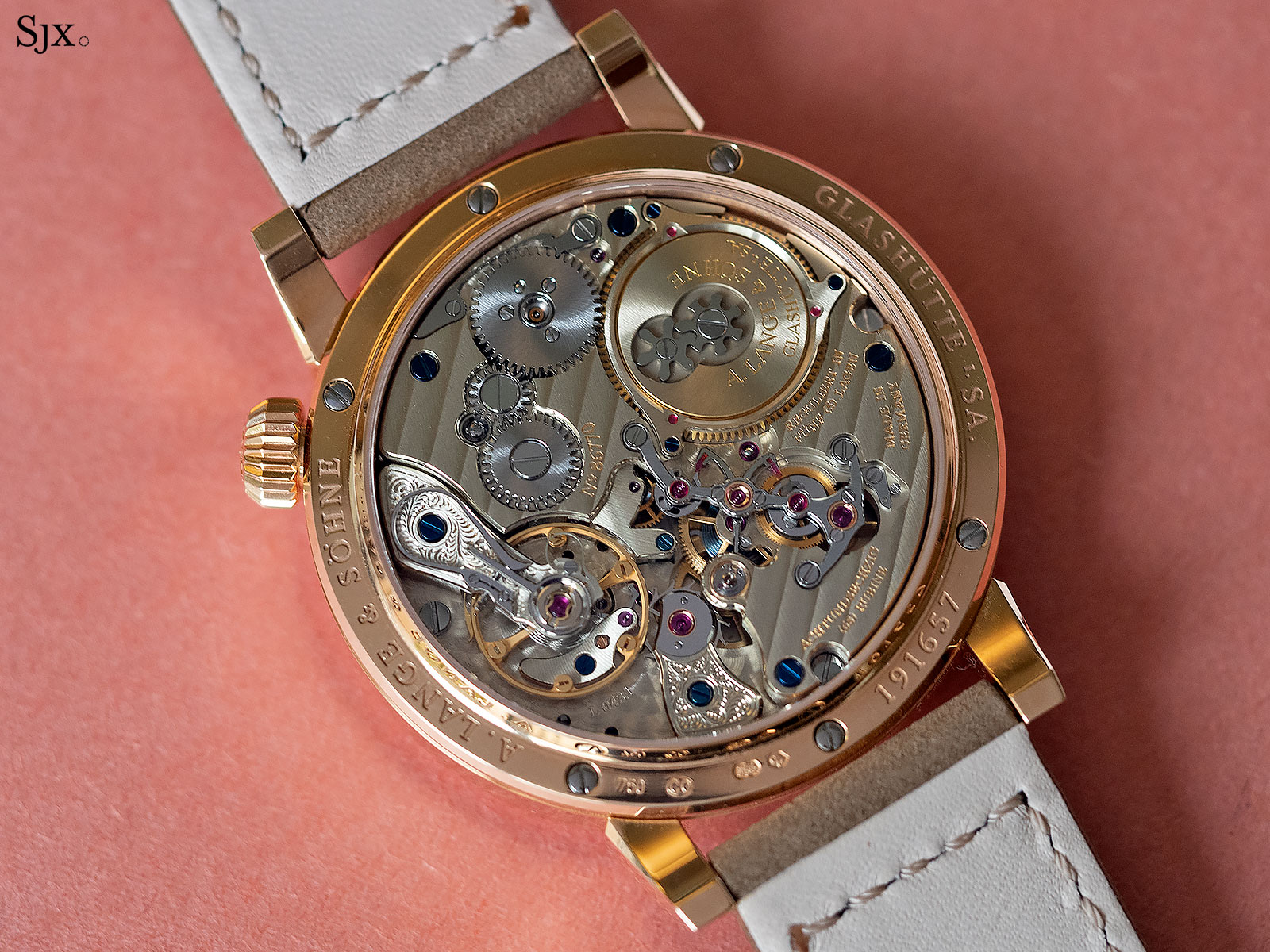
The models were all regular production, save for the platinum model that was limited to 200 pieces. The yellow gold model was discontinued first in 2013, but the pink and white gold versions were in production until earlier this year.
Though four references were announced in 2009, the number of first-generation, time-only Zeitwerk models later increased to seven, when limited editions like the Luminous and Handwerkskunst were launched.
References: 140.029 (white gold), 140.021 (yellow gold), 140.032 (pink gold) and 140.025 (platinum)
Movement: L043.1
Limited edition: 200 pieces for the platinum version
November 2009 and January 2010 – the first “Lumen”
Shortly after the Zeitwerk was launched, Lange took the covers off a surprising iteration of the model: the Zeitwerk “Phantom” ref. 140.035 that was the first-ever “Lumen” edition. It was announced in late 2009 and then officially unveiled at SIHH the follow year.
For a limited edition variant to arrive just months after the original was unexpected – especially since the Luminous even more limited than the platinum edition and priced substantially higher – but the timing was perhaps intentional in order to cater the strong commercial success of the Zeitwerk. And remember the Financial Crisis ongoing at the time, which dimmed overall demand for the brand’s watches, meaning the Zeitwerk might have provided a much-needed boost.
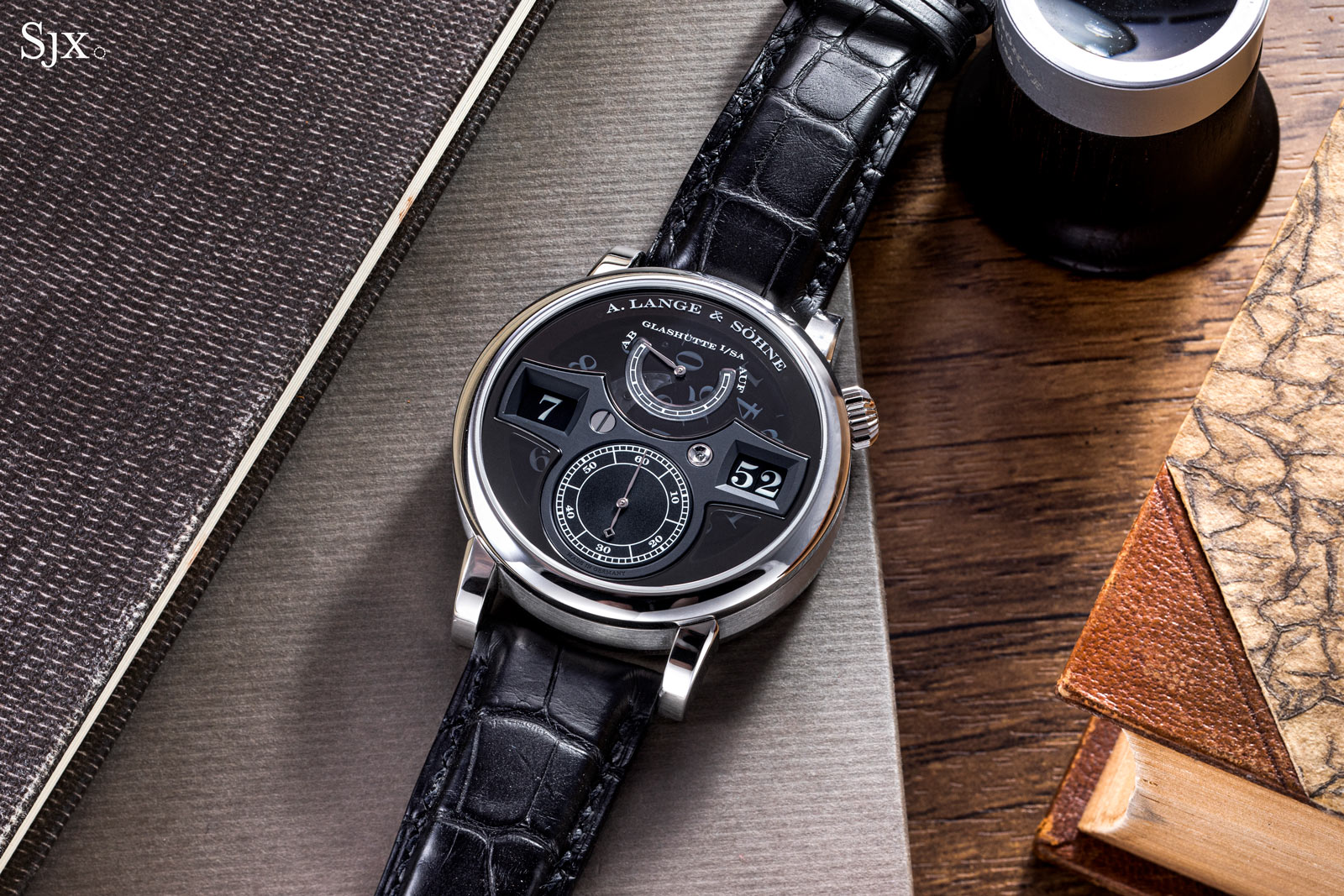
Limited to 100 pieces, the Zeitwerk Luminous has a grey-tinted clear sapphire dial that reveals the extra-large discs beneath. Utterly unexpected from Lange, a brand better known at the time for studious formality, the Luminous is appealing not just because it is different but because the discs glow in the dark at night.
Notably, the “wing” bridge, along with the sub-dial for the seconds, are coated black, an unusual design feature in a Lange. Minor changes were made to the movement due to the see-through dial, resulting in a new movement known as L043.3, instead of the L043.1 found in the original.
The first of only two Zeitwerk Luminous editions, this special execution had a case of platinum, the metal of choice for most Lange limited editions at the time.
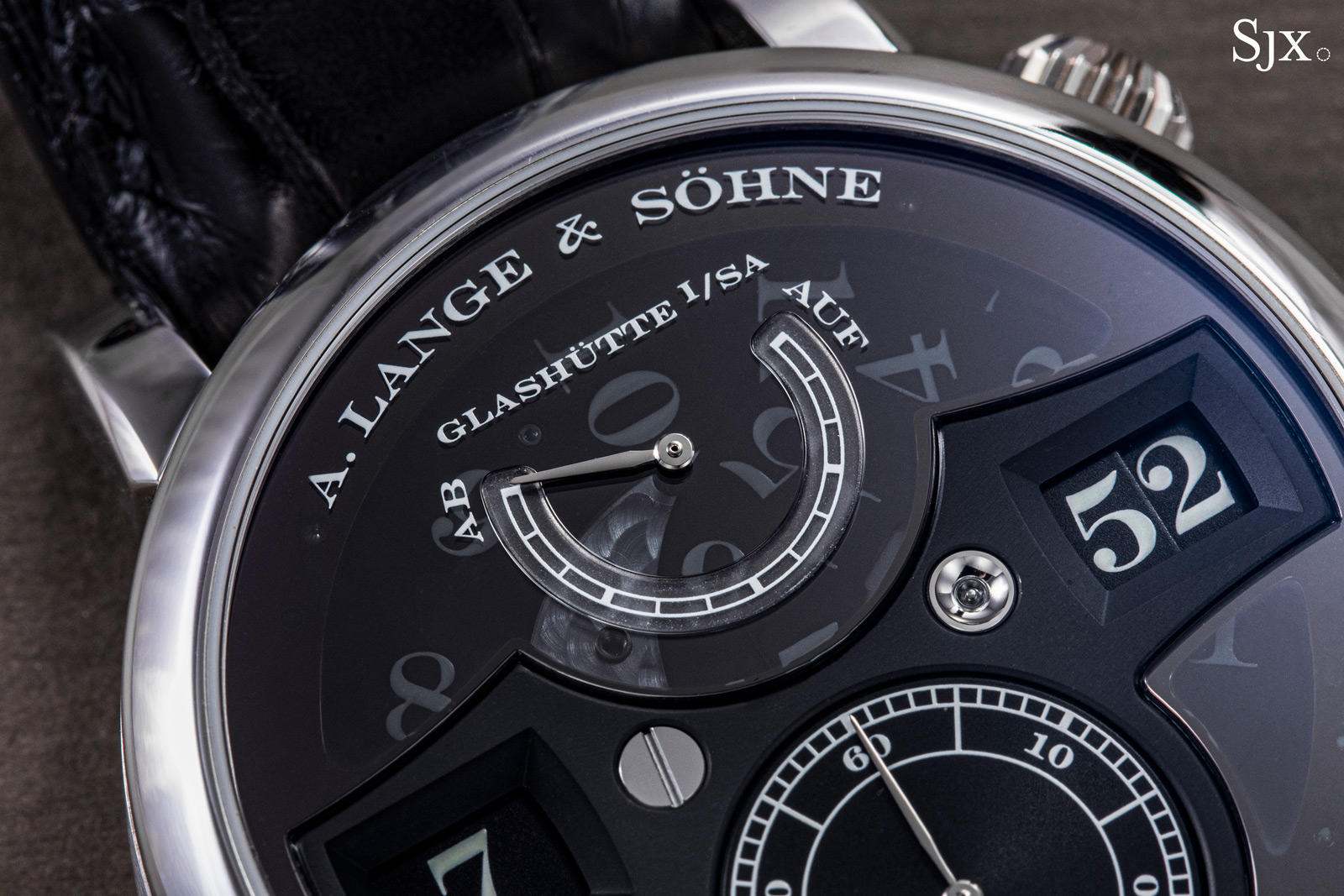
Reference: 140.035 (platinum)
Movement: L043.3
Limited edition: 100 pieces
Notable features: Tinted sapphire dial with luminous discs
January 2011 – the first complicated Zeitwerk
With the standard movement being L043.1 and the Luminous containing the L043.3, you might be wondering what happened in between the two calibres.
The answer arrived during SIHH 2011 when Lange unveiled the first complicated Zeitwerk, the Striking Time powered by the L043.2. Interestingly, the calibre number indicates the chiming Zeitwerk began before the Luminous model.
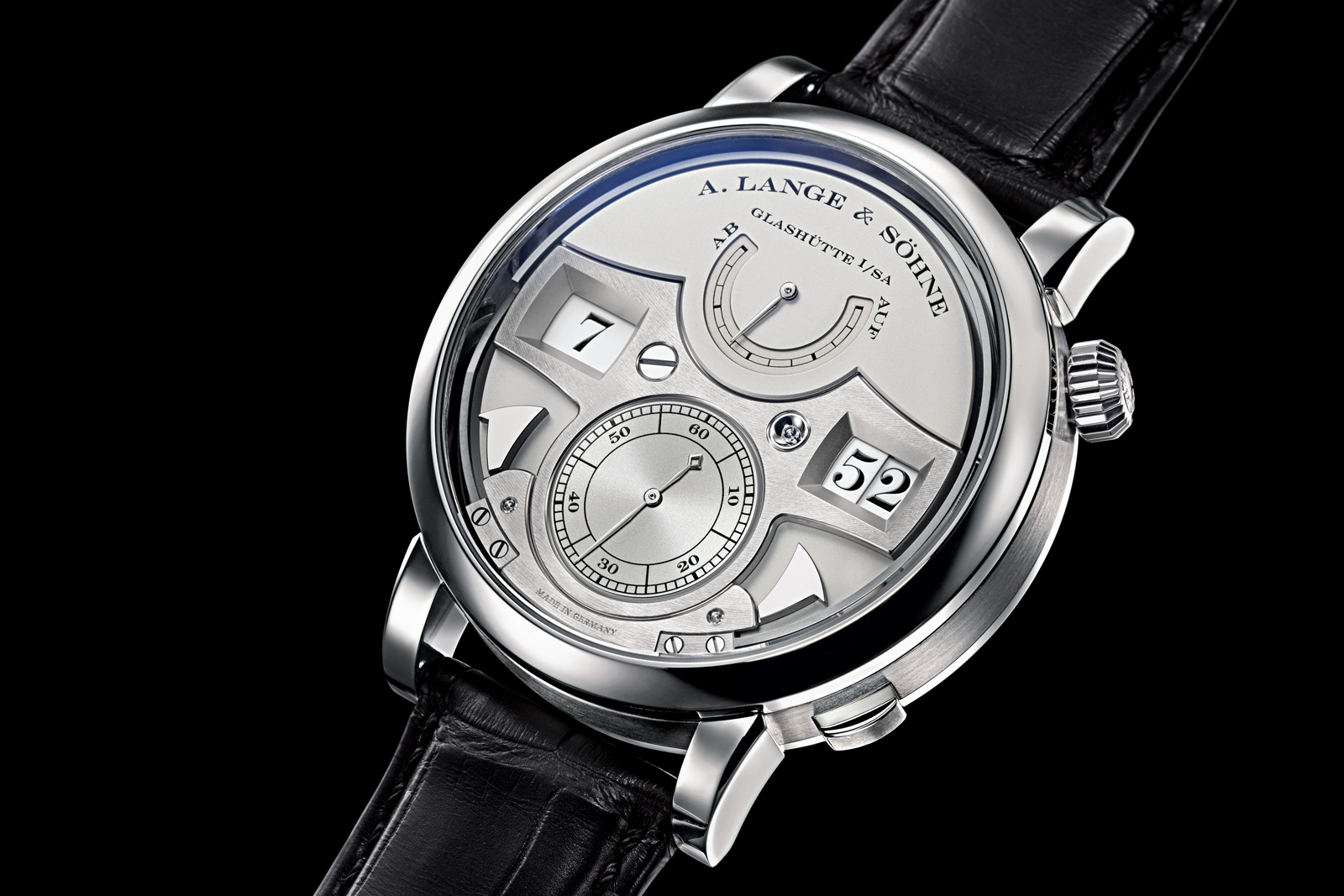
The Striking Time isn’t a minute repeater, but rather an hour striker. It chimes a single low note at the top of every hour as well as at the a singe high note at quarters. In other words, it indicates the passing of the time, instead of sounding out the time.
The Striking Time was the first and simplest of the three chiming Zeitwerk models to date, but it’s arguably important since it signalled the start of the Zeitwerk’s foray into complications.
Unlike preceding Zeitwerk models, the Striking Time has a larger case of 44.2 mm to accommodate the hammers and gongs visible on the dial. And the dial itself was tweaked to create recesses for the hammers and gongs.
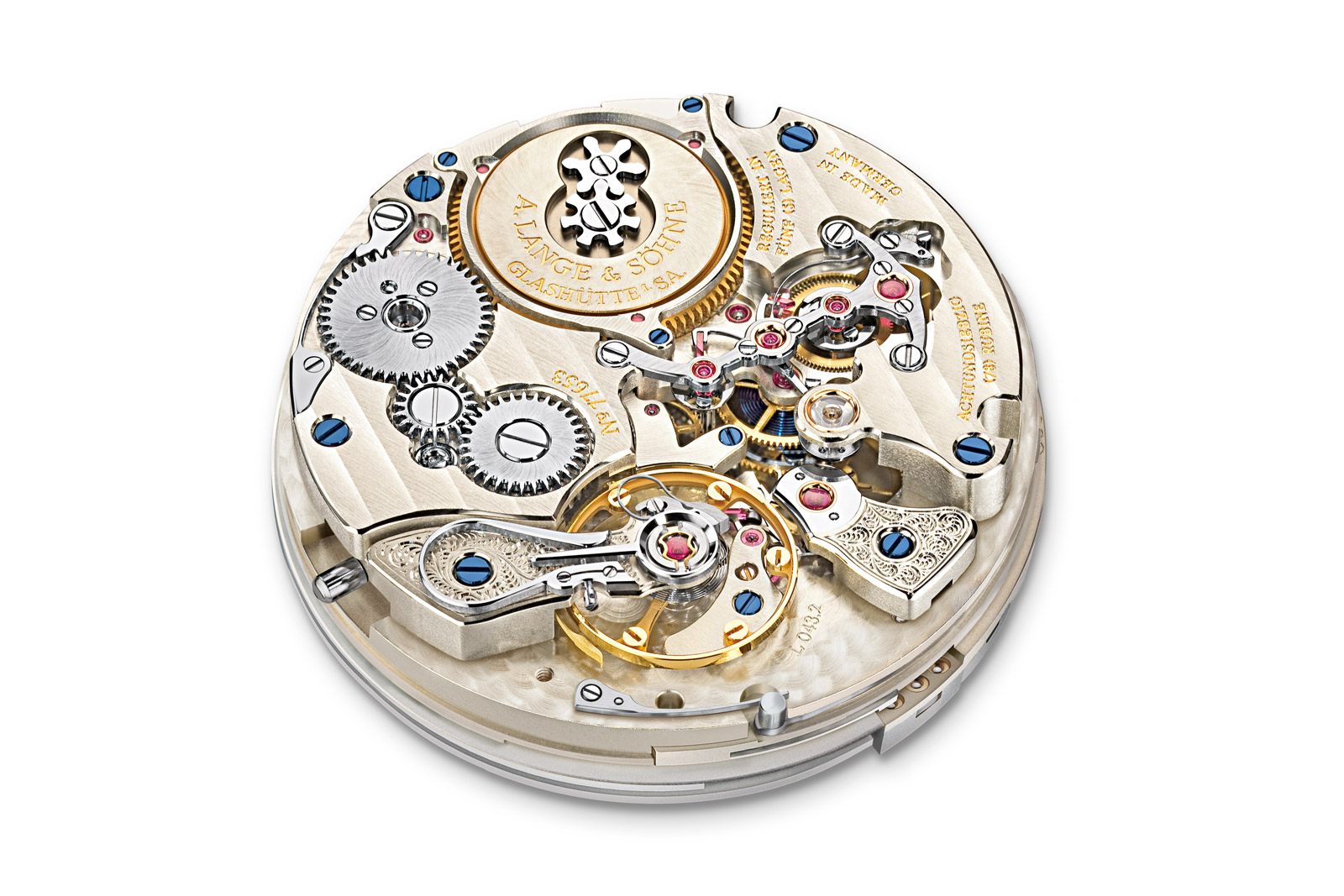
The L043.2 movement
Two versions of the Striking Time were unveiled, first the the ref. 145.025 in platinum, which was limited to 100 pieces, and then the ref. 145.029 in white gold that is still in production today. Another version in rose gold was unveiled a few years later, resulting in three Striking Time references so far.
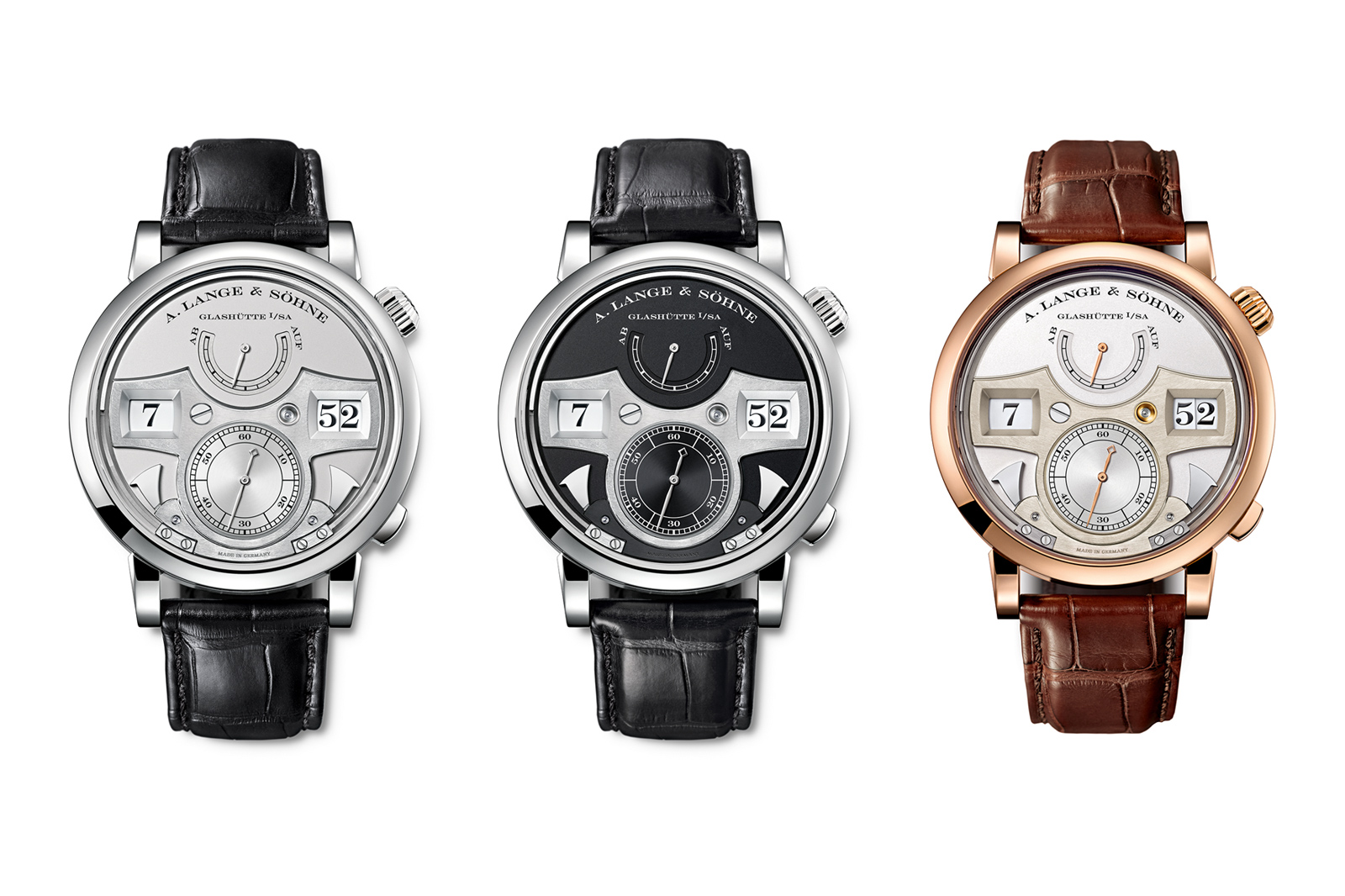
References: 145.025 (platinum) and 145.029 (white gold)
Movement: L043.2
Limited edition: 100 pieces for the platinum version
June 2011 – the unique piece
The first – and only publicly known – unique Zeitwerk arrived in June 2011 for a good cause. It was conceived to benefit a children’s charity in Singapore, Kidz Horizon Appeal.
The cost of the watch was borne by the family of the late Duncan Wang, an American entrepreneur who resided in Singapore. He passed away in 2009 and his family commissioned several one-off timepieces in the following years, all of which were sold at auction to benefit Kidz Horizon.
The unique Zeitwerk was sold ]at the 2011 Kidz Horizon gala dinner to a Singapore businessman for 138,000 Singapore dollars (or about US$100,000 at the time), which was sold at about double the retail price of the standard white gold Zeitwerk then.
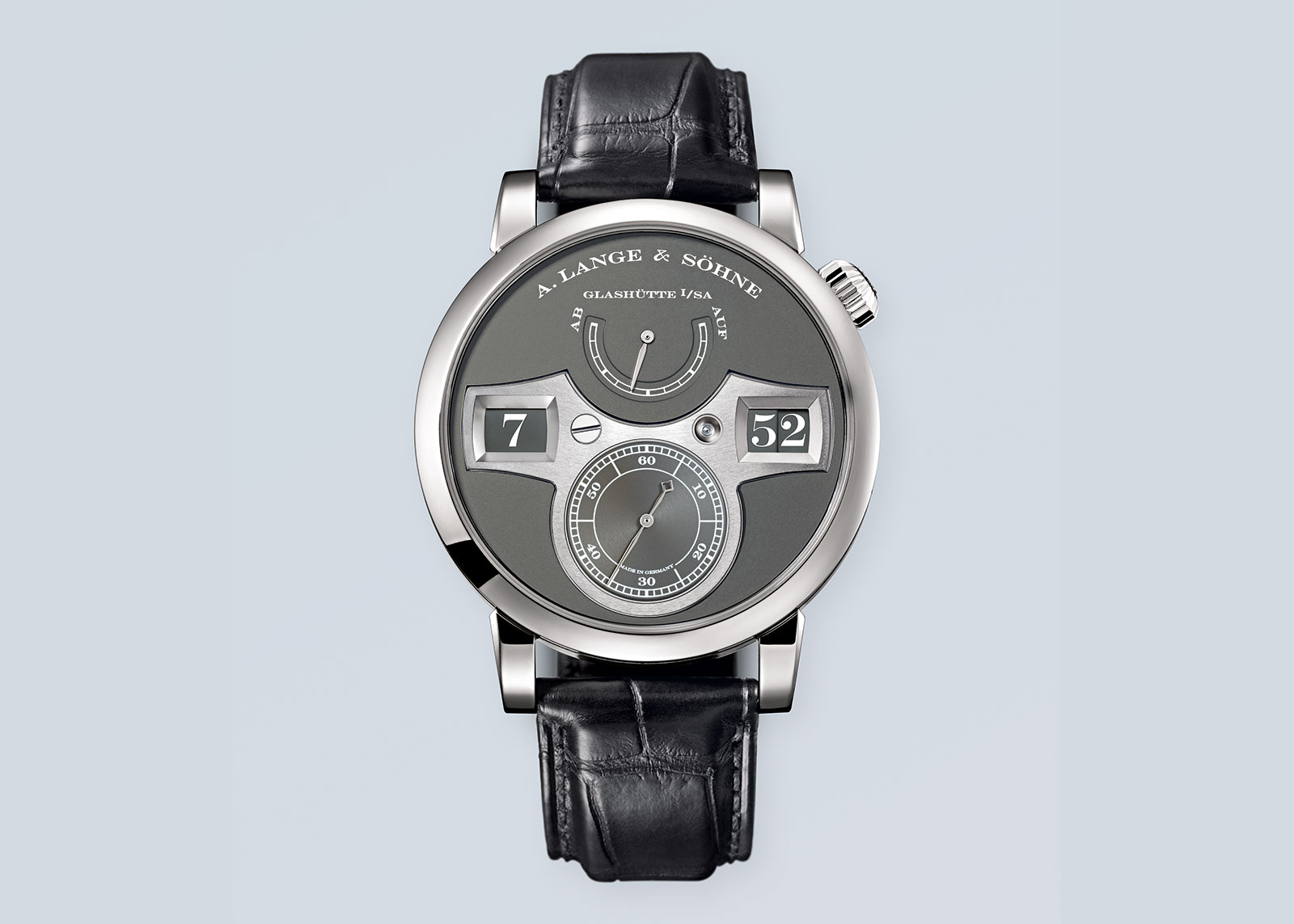
The 2011 project resulted in the one-off ref. 140.049 with white gold case and grey dial. But the changes went beyond the colour.
Other tweaks include the grey hours and minutes discs, making this one of the three Zeitwerk models (along with the two Luminous editions) that has dark-coloured discs instead of the usual white.
Additionally, a discreet “Made in Germany” was incorporated into the the seconds track at six o’clock, while on the standard Zeitwerk that is engraved on “wing” bridge. And the case back reflects the unique nature of the watch with its rim engraved with “1/1” and “SGP 2011”.
Reference: 140.049 (white gold)
Movement: L043.1
Limited edition: Unique piece
September 2012 – the first Handwerkskunst
After the Luminous and Kidz Horizon, the third very-special Zeitwerk arrived in 2012. All about artisanal craftsmanship, it was the Zeitwerk Handwerkskunst ref. 140.048. The extraordinary decoration, along with a surprise in the movement, meant the production of Handwerkskunst edition was difficult enough to limit the edition to just 30 pieces.

Like other Handwerkskunst watches, this Zeitwerk has its front and back adorned with traditional decorative techniques far more elaborate and nuanced than that found on the standard models.
The solid-gold dial, for example, is hand engraved with tiny dimples – the result of the careful removal of minuscule amounts of gold from the dial surface with a burin. At the same time, the markings on the movement bridges are engraved by hand instead of being done by machine.
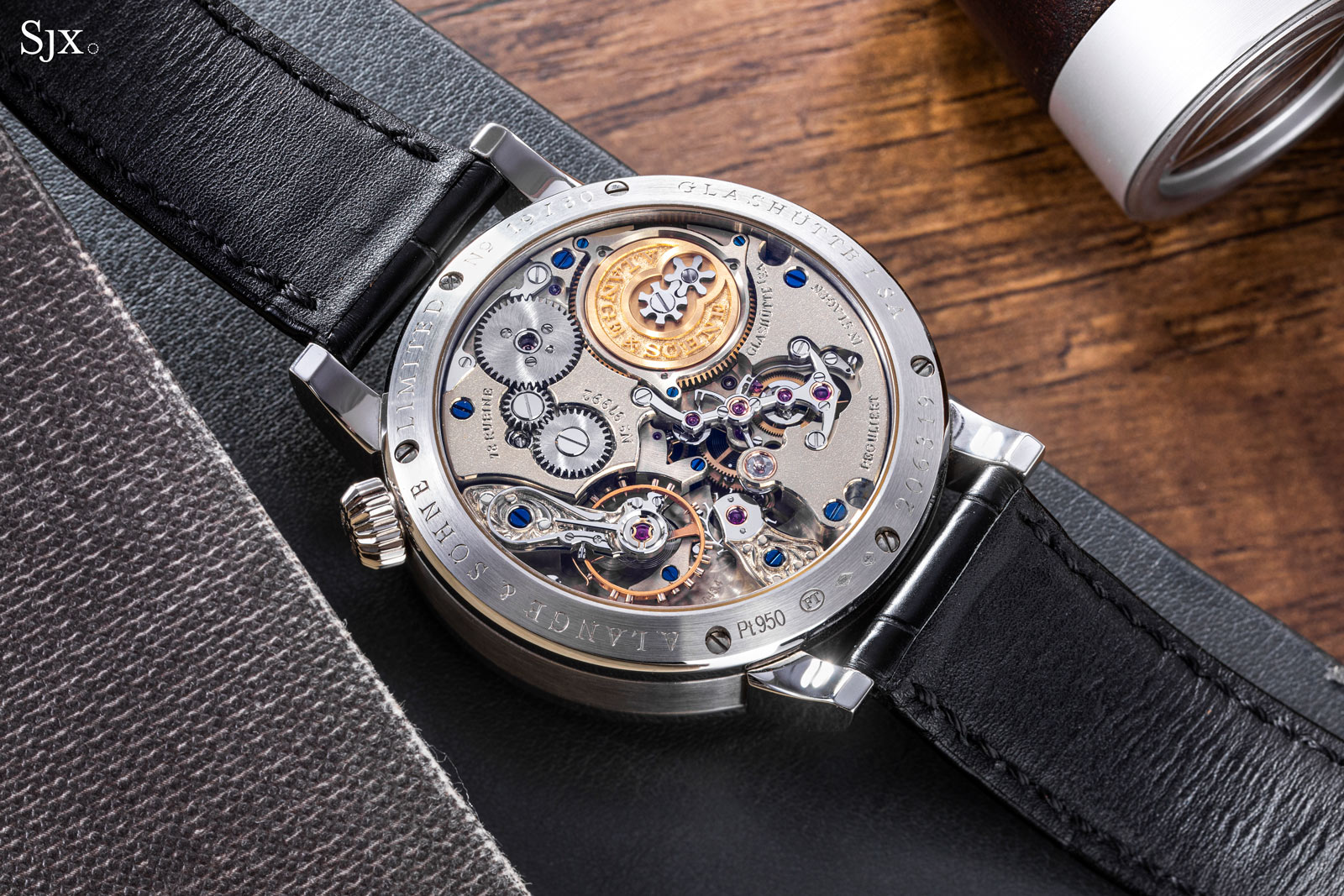
Interestingly, the Zeitwerk Handwerkskunst was also equipped with a technical update. The escapement is no ordinary Swiss lever, but the long-forgotten Glashütte lever.
Lange managed to recover the know-how to fabricate this unusual escapement by tapping on a retired employee who was then already in her nineties. That explains why the movement is L043.4 instead of the L043.1 in the regular models.
Reference: 140.048 (platinum)
Movement: L043.4
Limited edition: 30 pieces
Notable feature: Hand-engraved decoration
January 2014 – a small update
A new reference arrived two years after the Handwerkskunst, but it was only minor update to the styling of an existing model. Launched at SIHH 2014, the Zeitwerk Striking Time was identical to the 2011 model but in a different metal.
Retaining the 44.2 mm case, the new ref. 145.043 had a pink gold case and a silver dial. Following the design codes of the time-only Zeitwerk, the “wing” bridge on the pink gold Striking is untreated German silver.
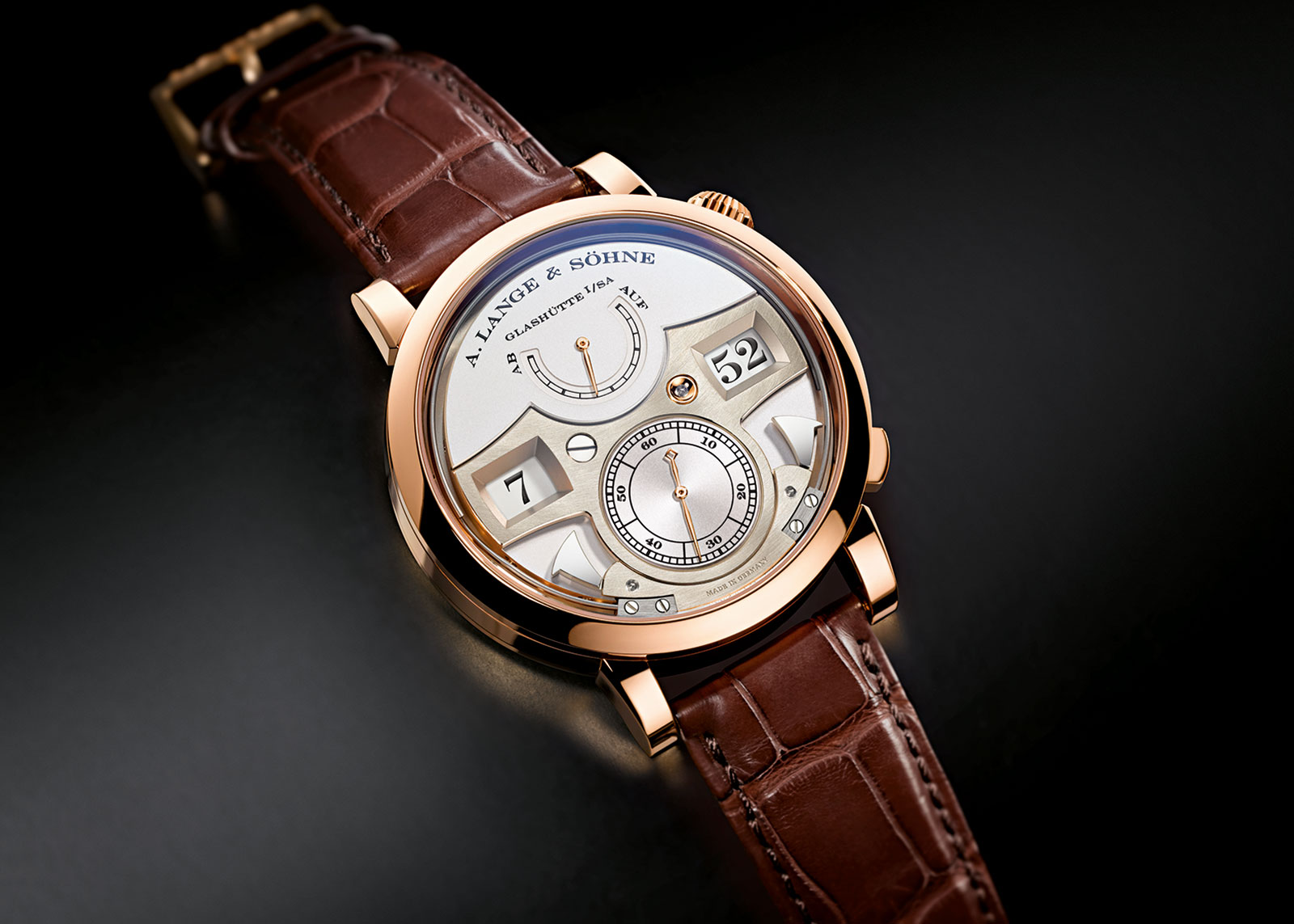
Like the white gold version, this wasn’t a limited edition and is still in production today. It was also the last iteration of the Striking Time, which means it’s probably due for an update given that the L043.2 within is based on the first-generation calibre.
Reference: 145.043 (pink gold)
Movement: L043.2
Limited edition: No
January 2015 – the first minute repeater
Just a year later, Lange debuted a major new model, the second Zeitwerk with an additional complication.
At SIHH 2015, Lange unveiled the Zeitwerk Minute Repeater, a huge step up from the Striking Time in complexity but not in dimensions – the case of Minute Repeater is only 1 mm thicker than that of the Striking Time. That’s impressive considering meaning the minute repeating L043.5 has 771 parts, 243 parts more than the L043.2 in the Striking Time.
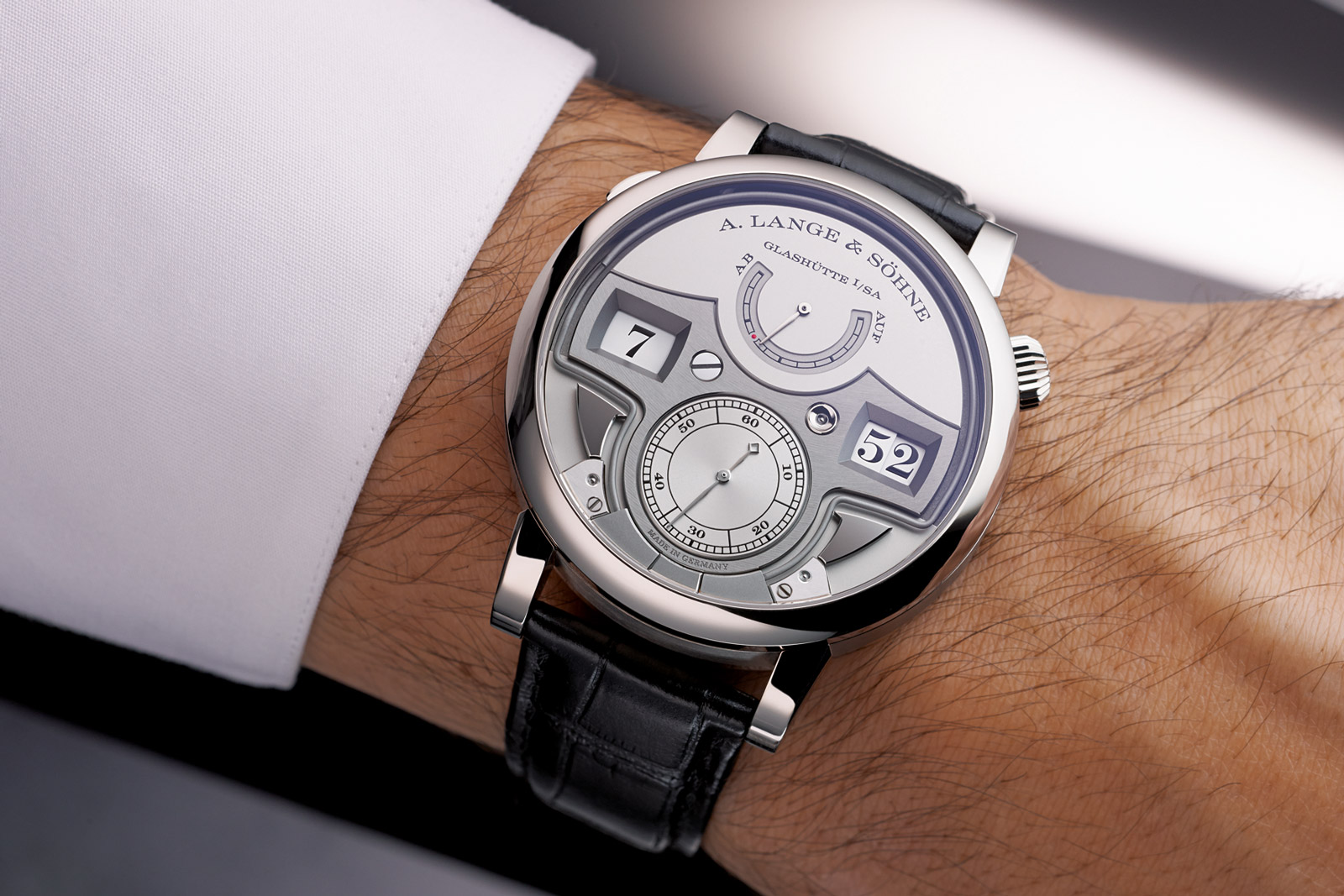
Unlike the Striking Time that indicates time is passing, the Minute Repeater tells the time acoustically. And unlike conventional repeaters, it strikes the time in a 10-minute segments instead of 15-minute segments. In other words, it’s a decimal repeater, making it more intuitive to comprehend when listening to the time.
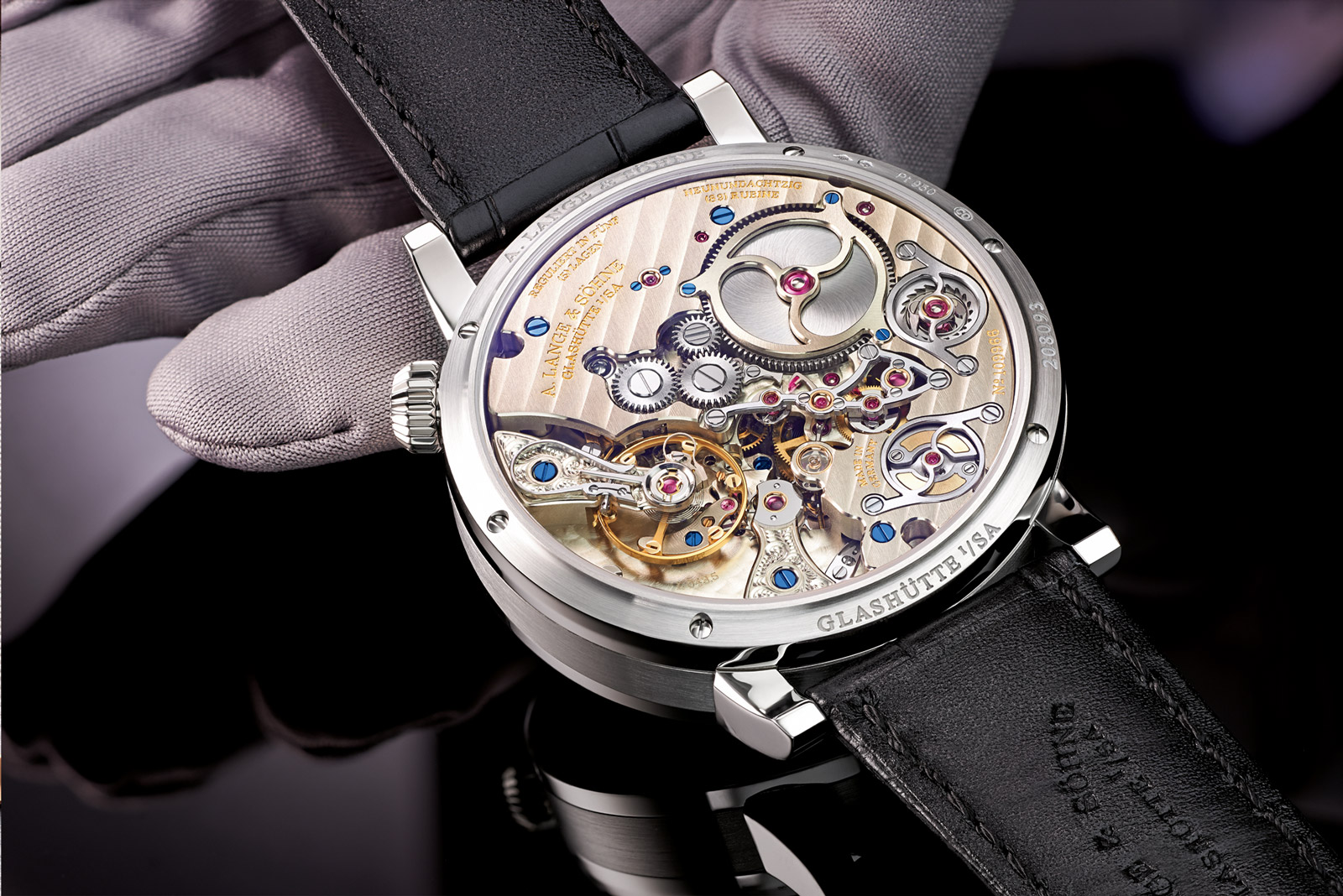
That said, the Minute Repeater can be distinguished from its simpler brethren even without activating the chimes as the gongs on the dial are arranged differently.
On the Striking Time, the gongs trace the inner circumference of the case, while on the Minute Repeater the gongs follow the outline of the “wing” bridge on the the lower half of the dial.
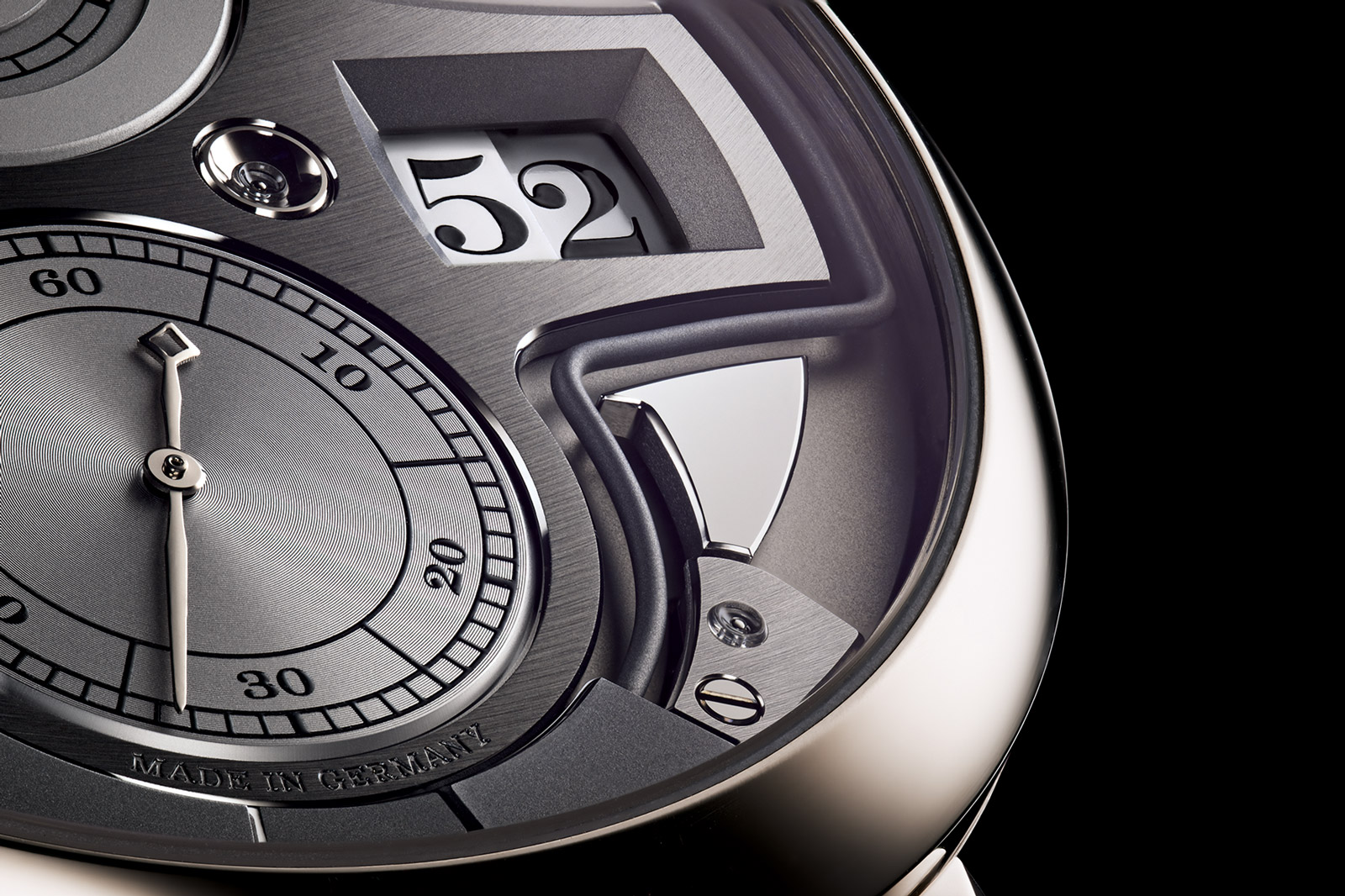
As is typical for Lange , the Zeitwerk Minute Repeater made its debut in platinum as the ref. 147.025, but as a regular production model.
A limited edition reference of the same, however, was unveiled a few years later (more on that later).
Reference: 147.025 (platinum)
Movement: L043.5
Limited edition: No
2016 – a quiet upgrade
Lange didn’t launch any new Zeitwerk in 2016, but it did make important changes to the existing movement. In fact, according to Robert Hoffman, the head of the Zeitwerk department, Lange has redesigned about 80% of the minute display mechanism.
The mechanical upgrade is obvious to the wearer – the single-digit minutes disc no longer arms itself with a mini jump at the 55-second mark, but it instead jumps to the next digit seamlessly at the top of each minute.
Though a seemingly simple update, it required substantial revision of the movement, including an entirely new set of gears for the constant-force mechanism and minute display.
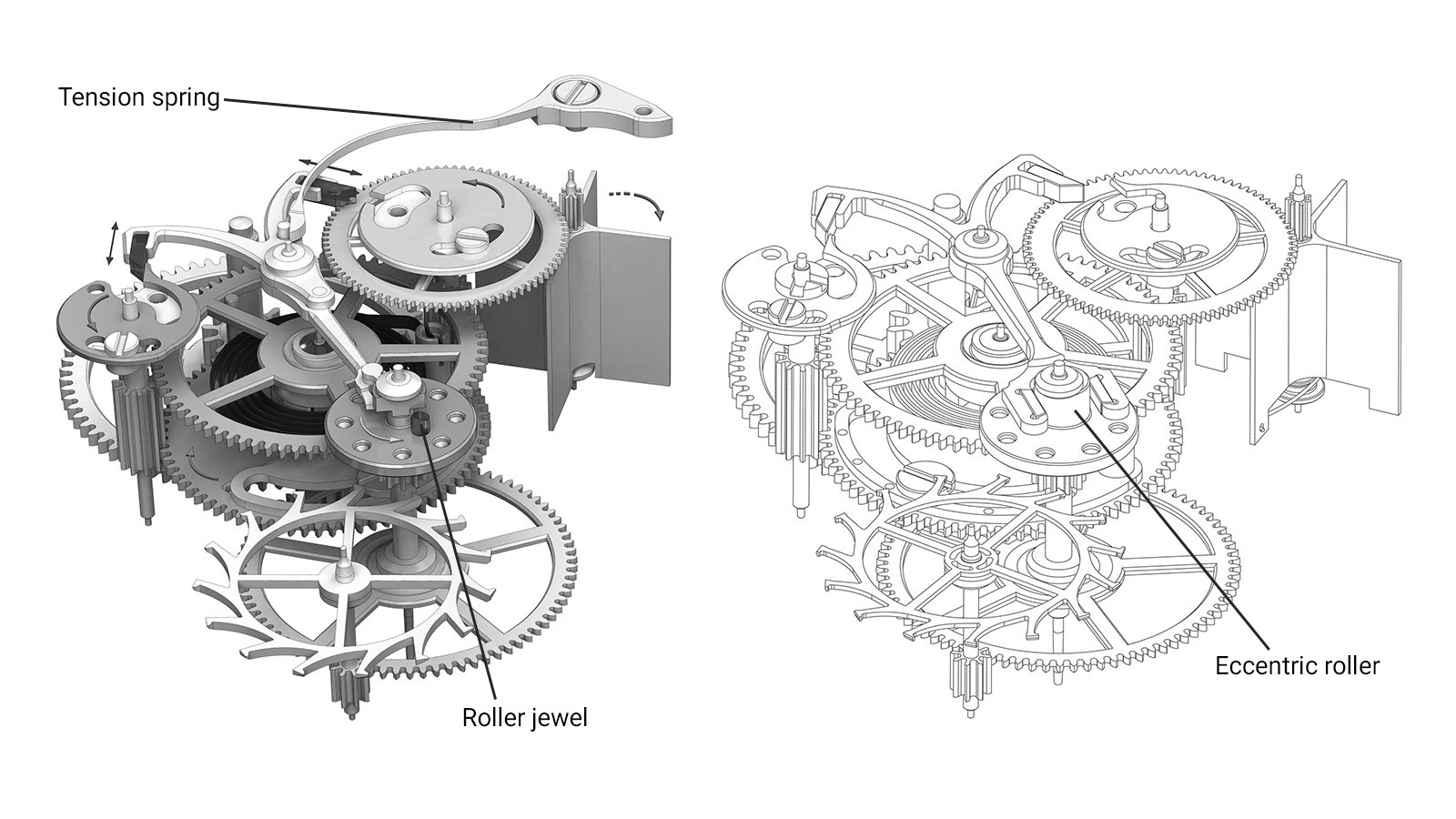
The original (left) and upgraded mechanism
January 2017 – the first (and possibly last) Decimal Strike
Two years after launching the Minute Repeater, Lange once again turned to the hour striker complication, but with a twist.
The Zeitwerk Decimal Strike ref. 143.050 has a slightly different movement that chimes more frequently. Instead of chiming at every quarter, the L043.7 inside rings every ten minutes.
Notably, the Decimal Strike also boasts other features that make it special. That includes a Honey Gold case that’s a shade between yellow and pink gold, as well as a Handwerkskunst-esque dial featuring tremblage engraving on the “wing” bridge, hammers and bridge for the hammers.
Limited to 100 pieces, the Decimal Strike was a one-off creation, because the movement was conceived specifically for this reference and never made it into regular production, at least for now.
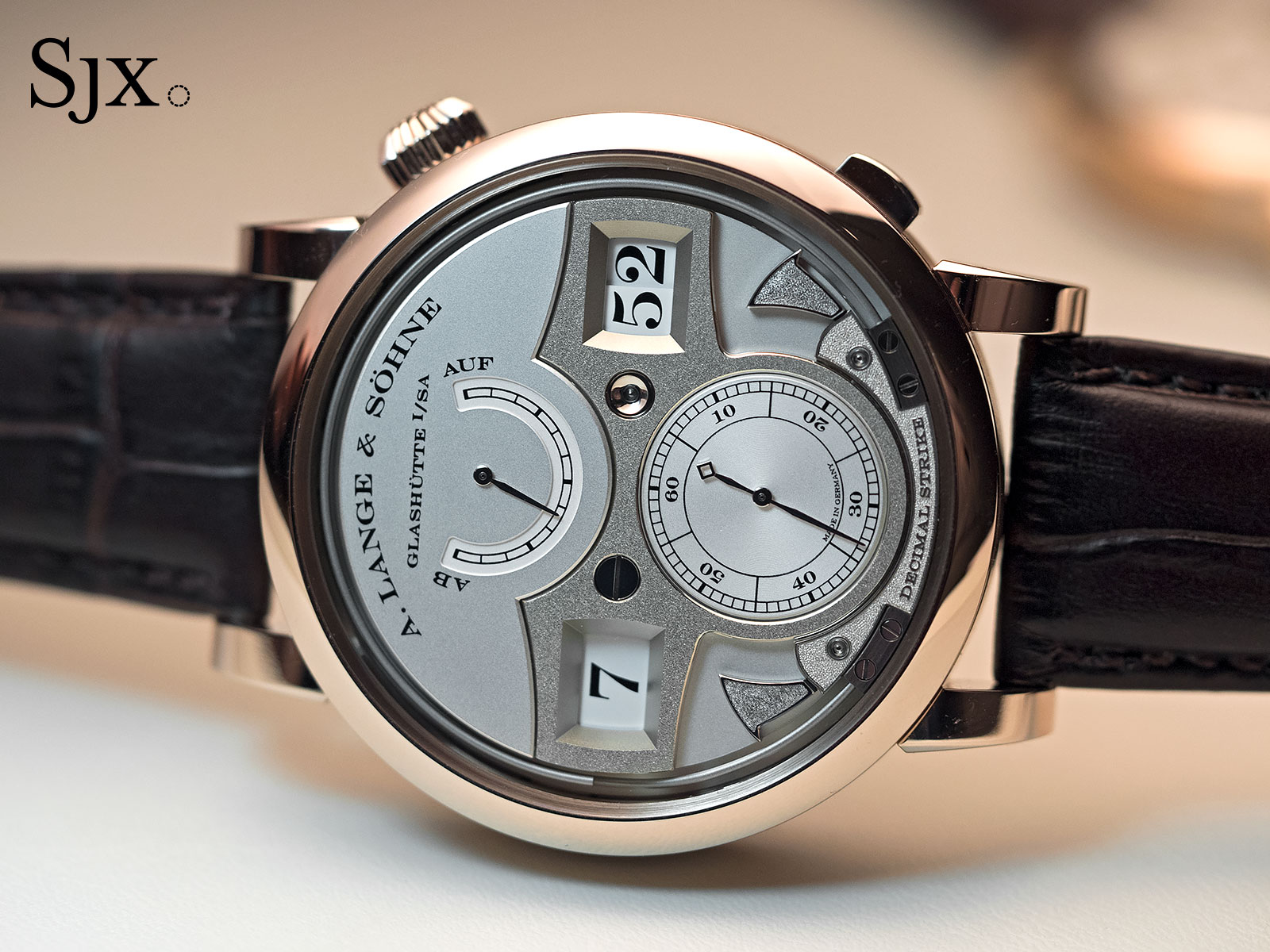
Reference: 143.050 (honey gold)
Movement: L043.7
Limited edition: 100 pieces
Notable feature: Hand-engraved decoration
January 2019 – the second-generation movement
Twenty-nineteen was the tenth anniversary of the Zeitwerk, an occasion marked in an appropriately significant manner. It saw the launch of the most important evolution of the Zeitwerk when Lange finally unveiled the all-new, second-generation movement.
The movement made its debut, not as in the classic time-only guise but instead within the Zeitwerk Date ref. 143.038 in white gold and an unusual grey dial.
Because of the date ring on the edge of the dial, the case was scaled up to large 44.2 mm, or about 2 mm wider than its time-only counterpart.
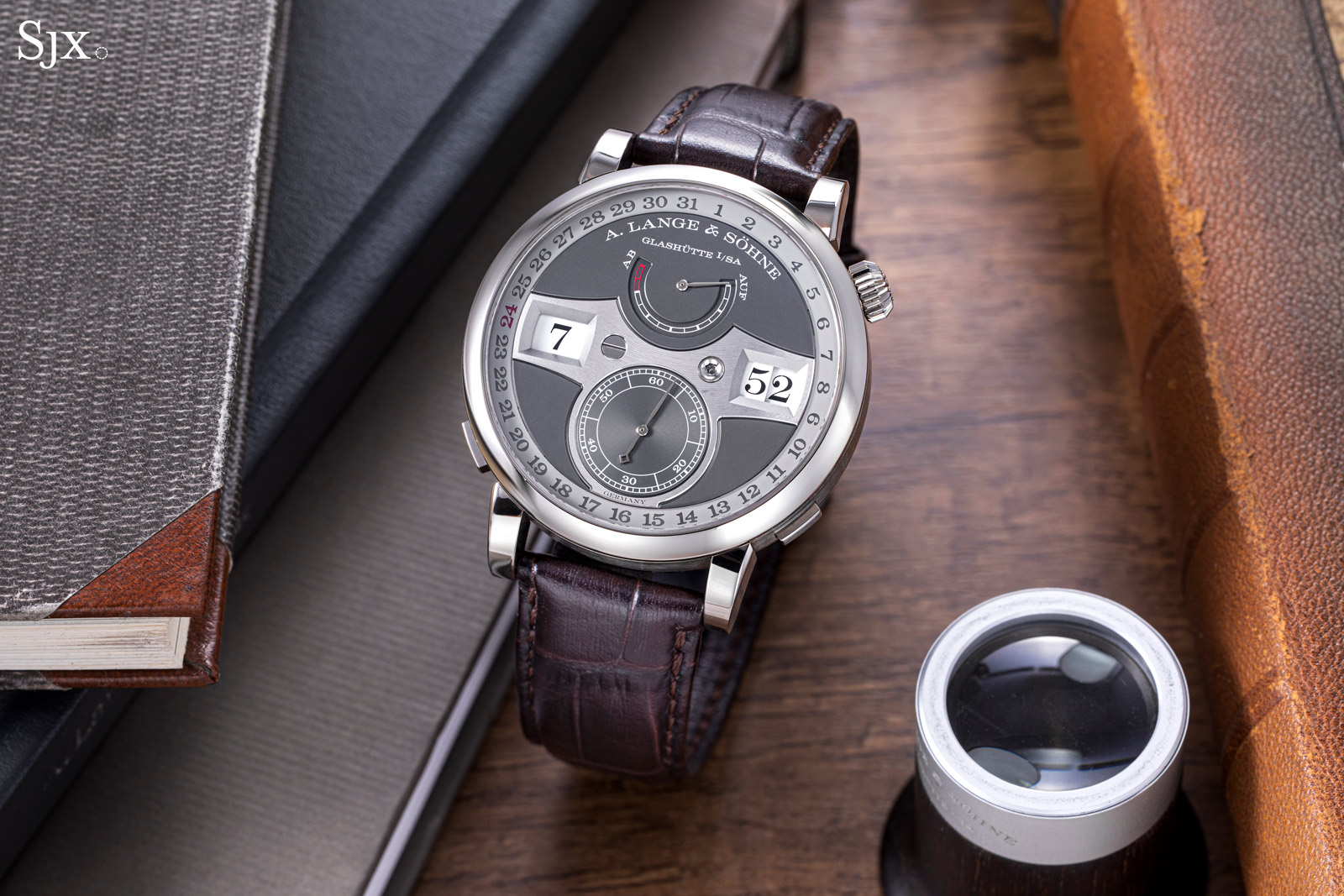
The most important upgrades of the Zeitwerk Date lie in the new L043.8 movement, which is naturally derived from the original L043.1 but substantially improved.
From a practical standpoint, the most useful upgrade is the extended power reserve, now twice as long at 72 hours. Equally useful is the pusher at four o’clock for the quickset hours.
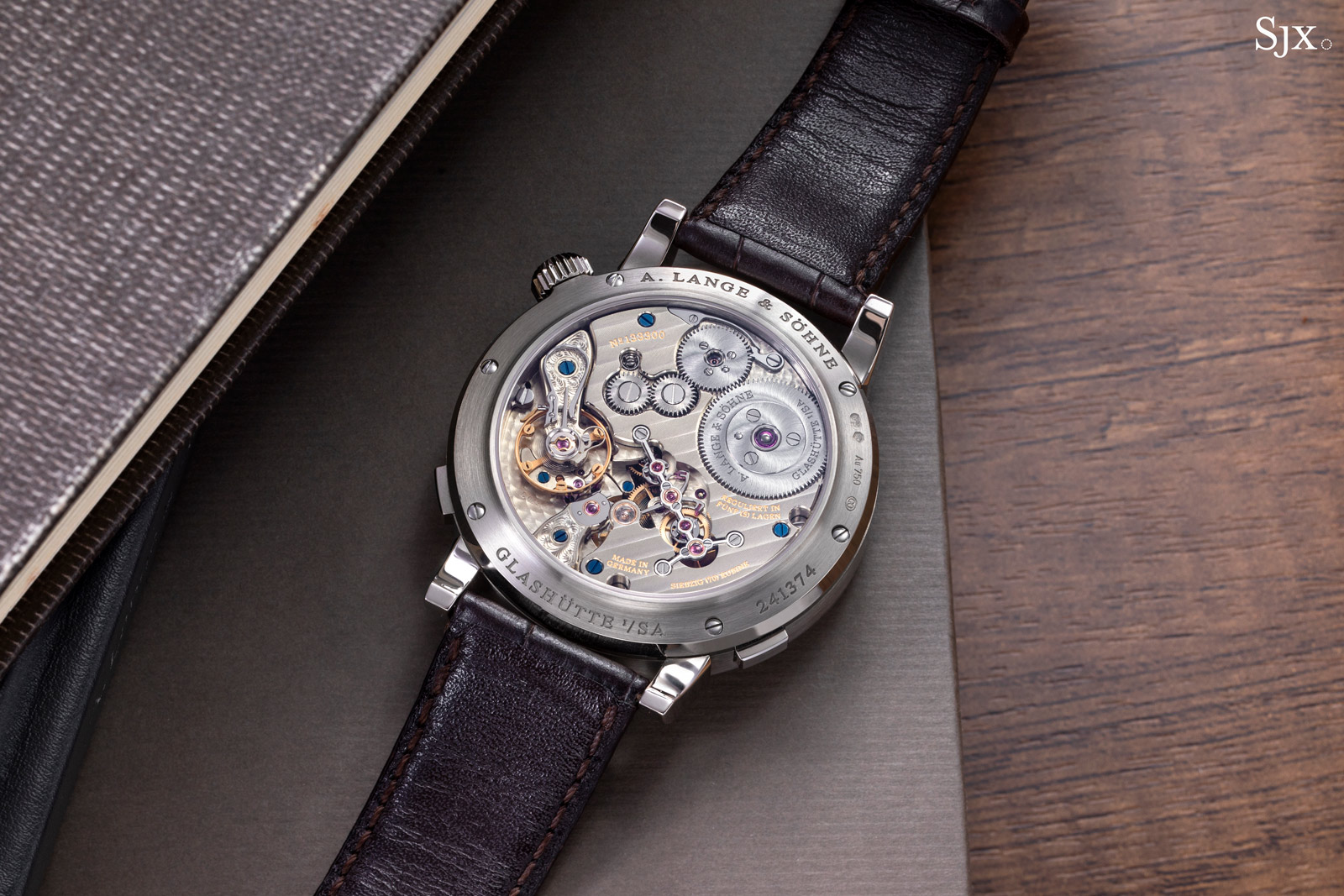
Reference: 143.038 (white gold)
Movement: L043.8
Limited edition: No
April 2020 – another small update
With the next Zeitwerk Lange returned to a past model. The Zeitwerk Minute Repeater ref. 147.028F became the first model in the range to sport a blue dial.
Unlike the original version in platinum that had a silver dial, the white gold version is a limited edition. Only 30 pieces were made, putting it on par with the Zeitwerk Handwerkskunst as the smallest production run amongst Zeitwerk models (leaving out the unique pieces).
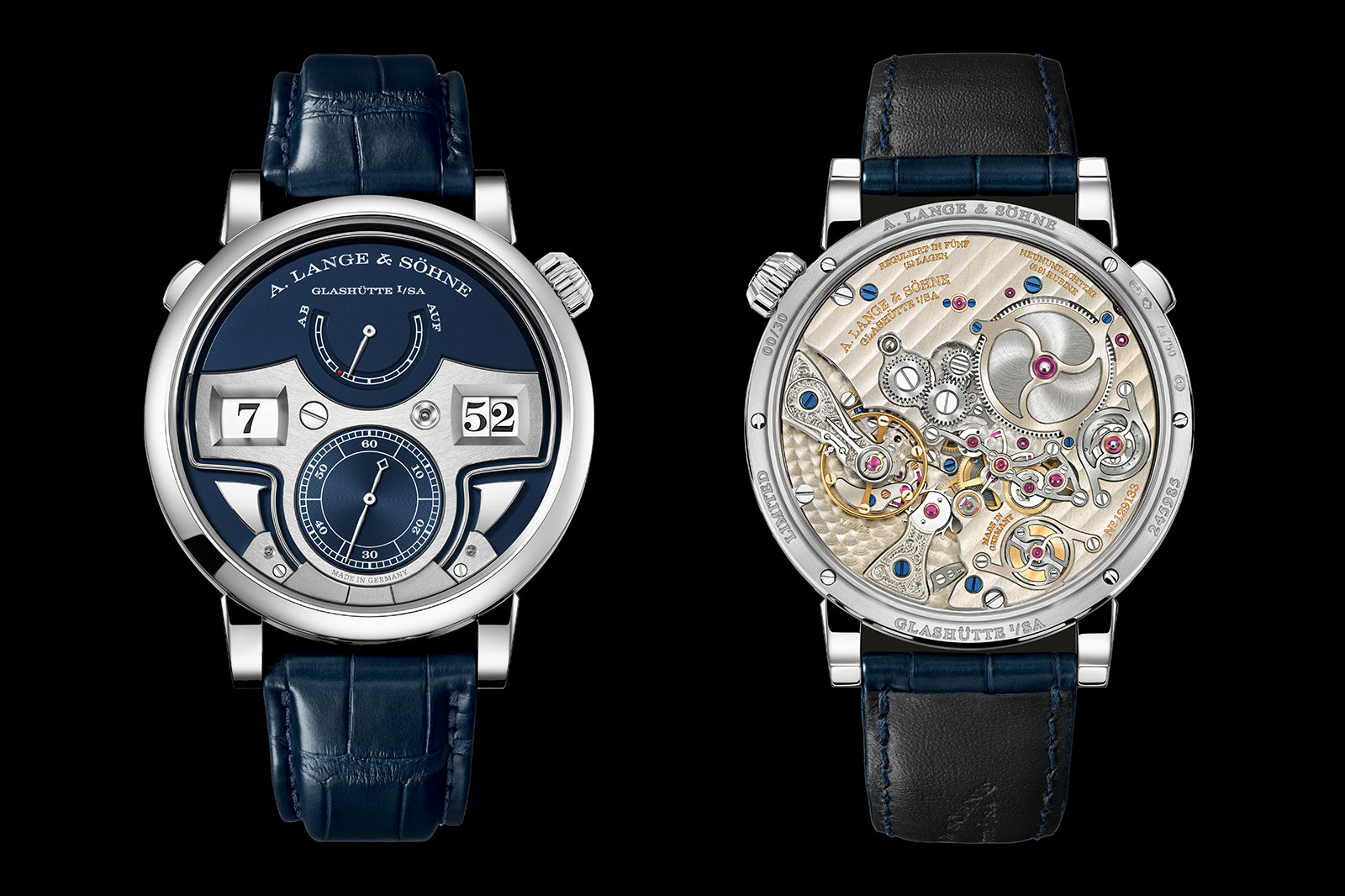
Reference: 147.028F (white gold)
Movement: L043.5
Limited edition: 30 pieces
October 2021 – the second “Lumen”
On October 24, 2021, 27 years since the brand was reestablished, Lange unveiled the first time-only second-generation Zeitwerk. The Zeitwerk Honeygold Lumen ref. 142.055 combines the brand’s proprietary gold alloy honey gold with the “Lumen” treatment.
Like the earlier Zeitwerk Date, the second Lumen has a second-generation movement with a 72-hour power reserve and quickset hours. It’s powered by the L043.9.
Unlike the original Zeitwerk Luminous that was limited to 100 pieces, the Honey Gold Lumen is limited to 200 pieces, reflecting the appetite for complicated Lange watches.
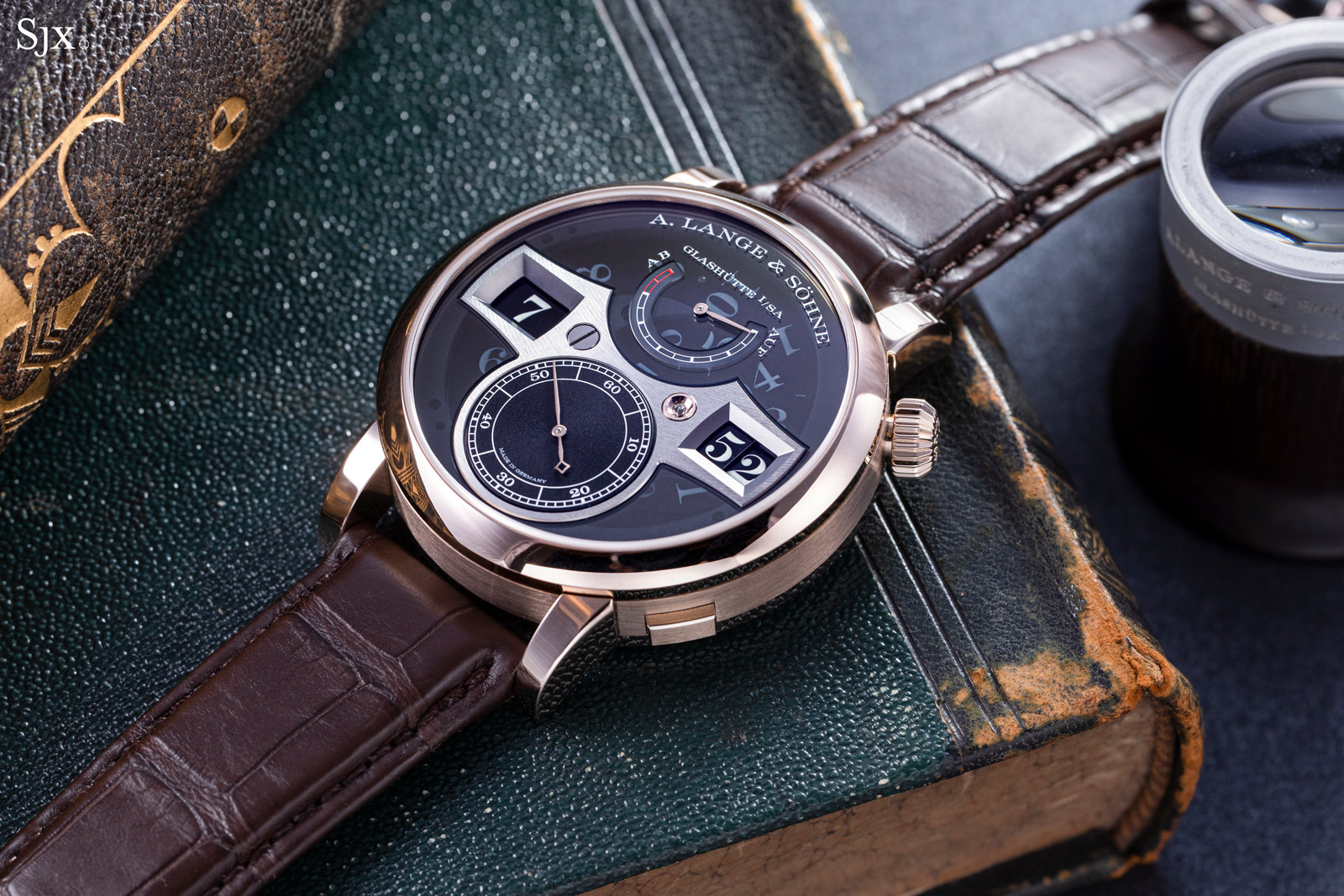
Reference: 142.055 (honey gold)
Movement: L043.9
Limited edition: 200 pieces
Notable features: Tinted sapphire dial with luminous discs
October 2022 – finally the second-generation time-only
A year after the Honeygold Lumen, Lange finally unveiled the long-expected second-generation time-only Zeitwerk to replace the original from 2009. The new models are the ref. 142.025 in platinum and ref. 142.031 in pink gold.
Notably the pink gold version now sports a black dial instead of silver as is typical for Lange and found on the first-generation Zeitwerk. And the second-generation Zeitwerk is only available in two metals, lacking the white gold and yellow gold variants for now.
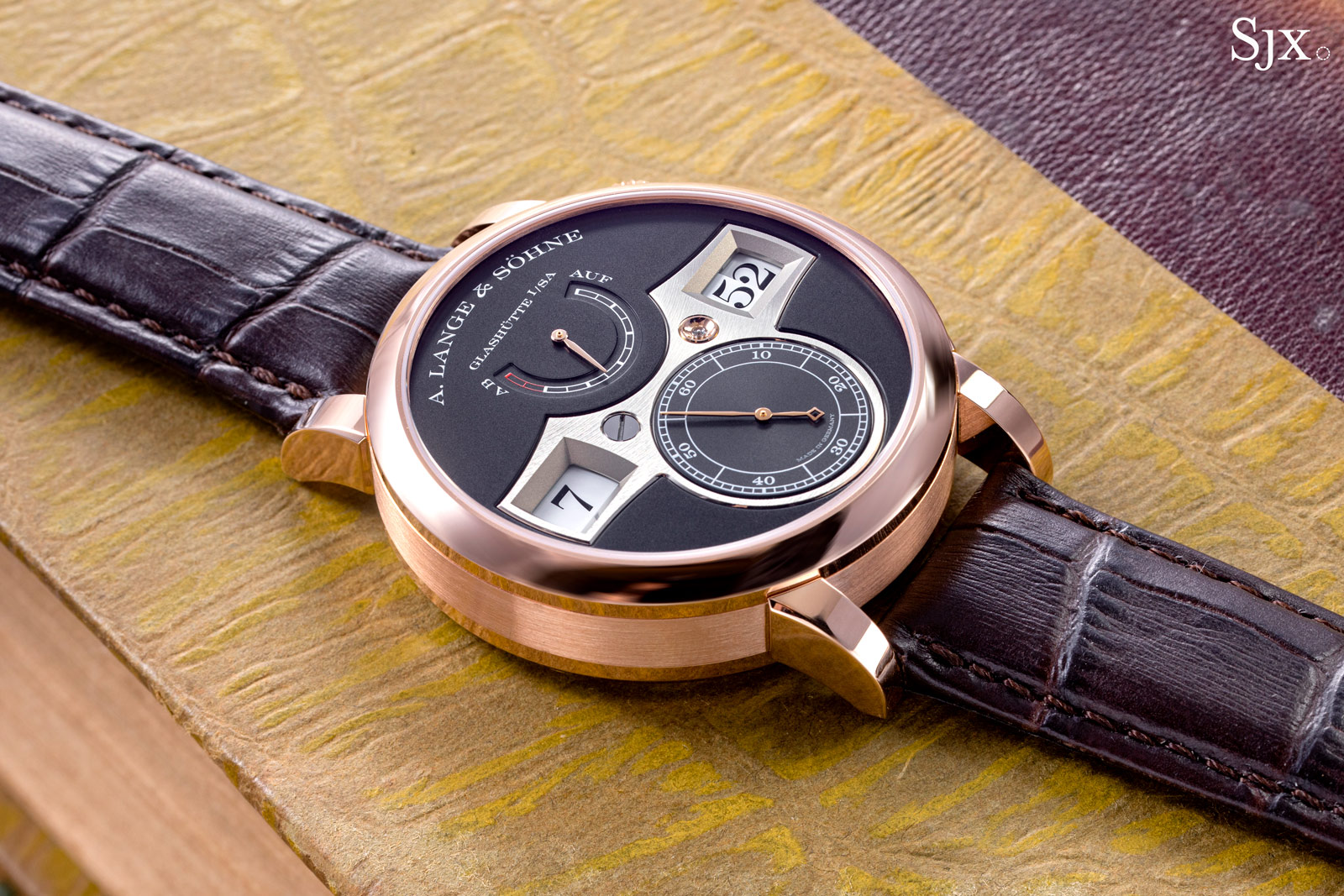
The movement within is the L043.6, which indicates that the calibre preceded the L043.7 of the Decimal Strike of 2017. For a detailed look at the second-generation model, check out our in-depth story.
Reference: 142.031 (pink gold) and 140.025 (platinum)
Movement: L043.6
Limited edition: No
Addendum: There have been 10 time-only Zeitwerk references across the two generations, including one “Lumen” edition from each generation, as well as a Handwerkskunst.
Correction October 30, 2022: There have been seven limited edition Zeitwerks, instead of six as stated in an earlier version of the article.
Back to top.
